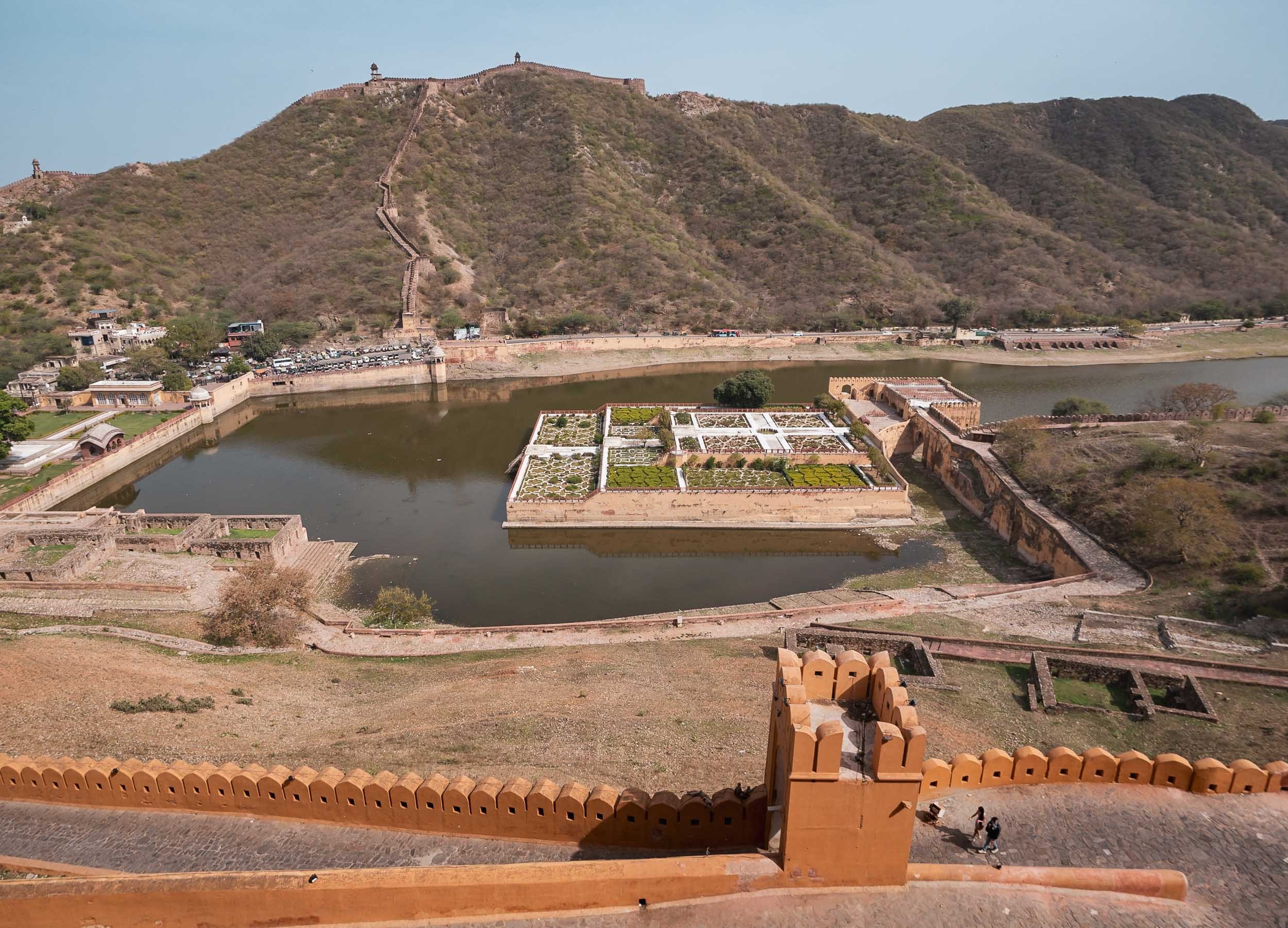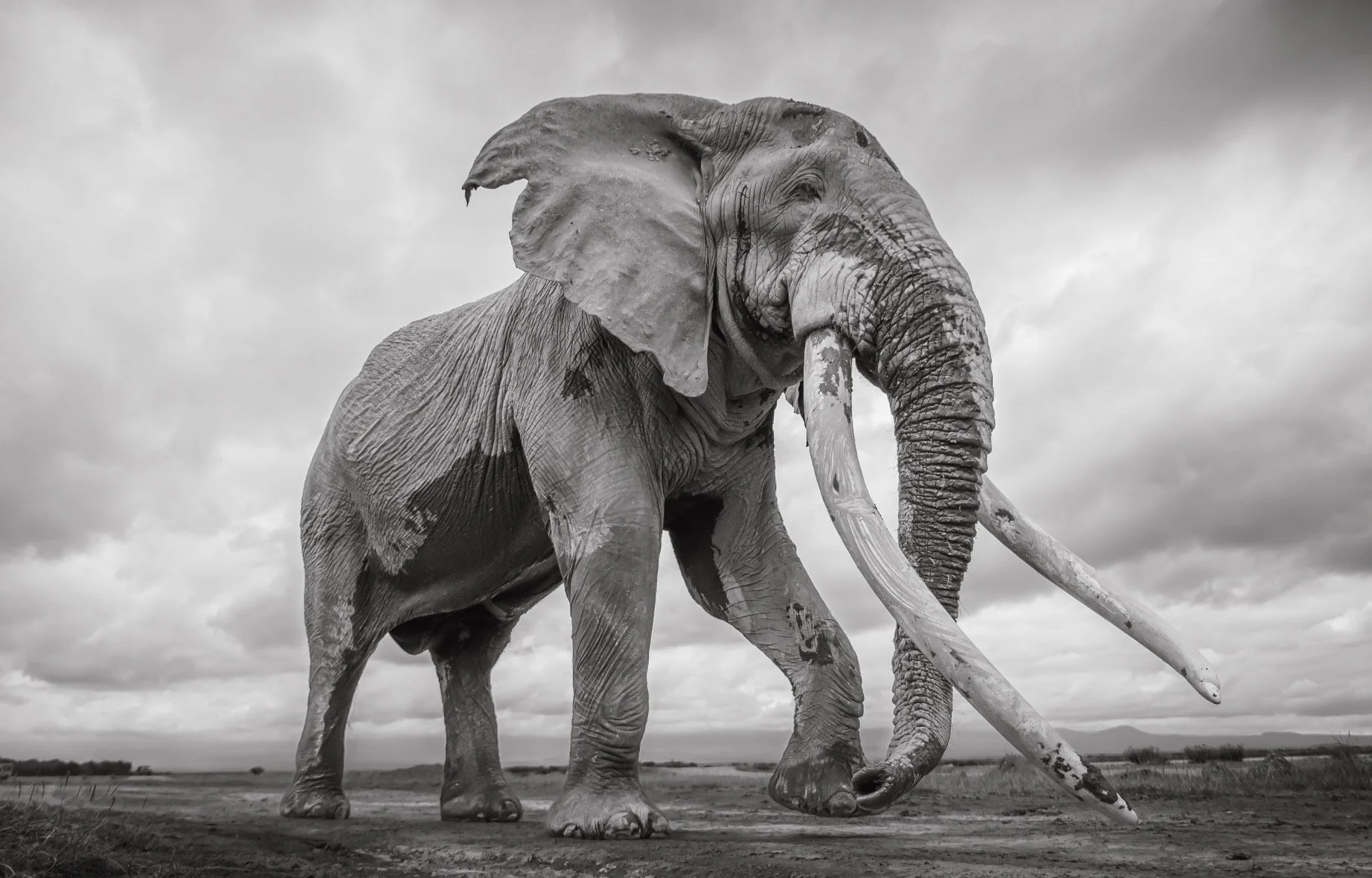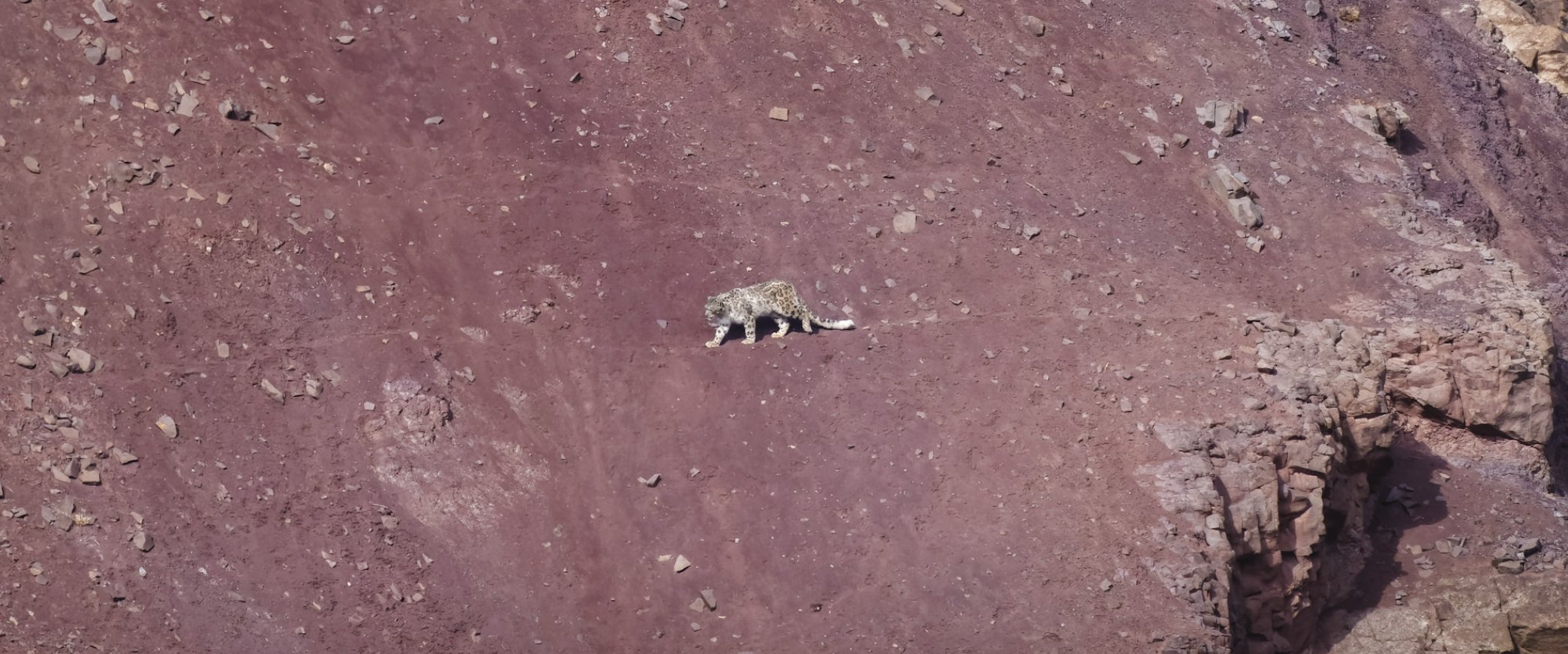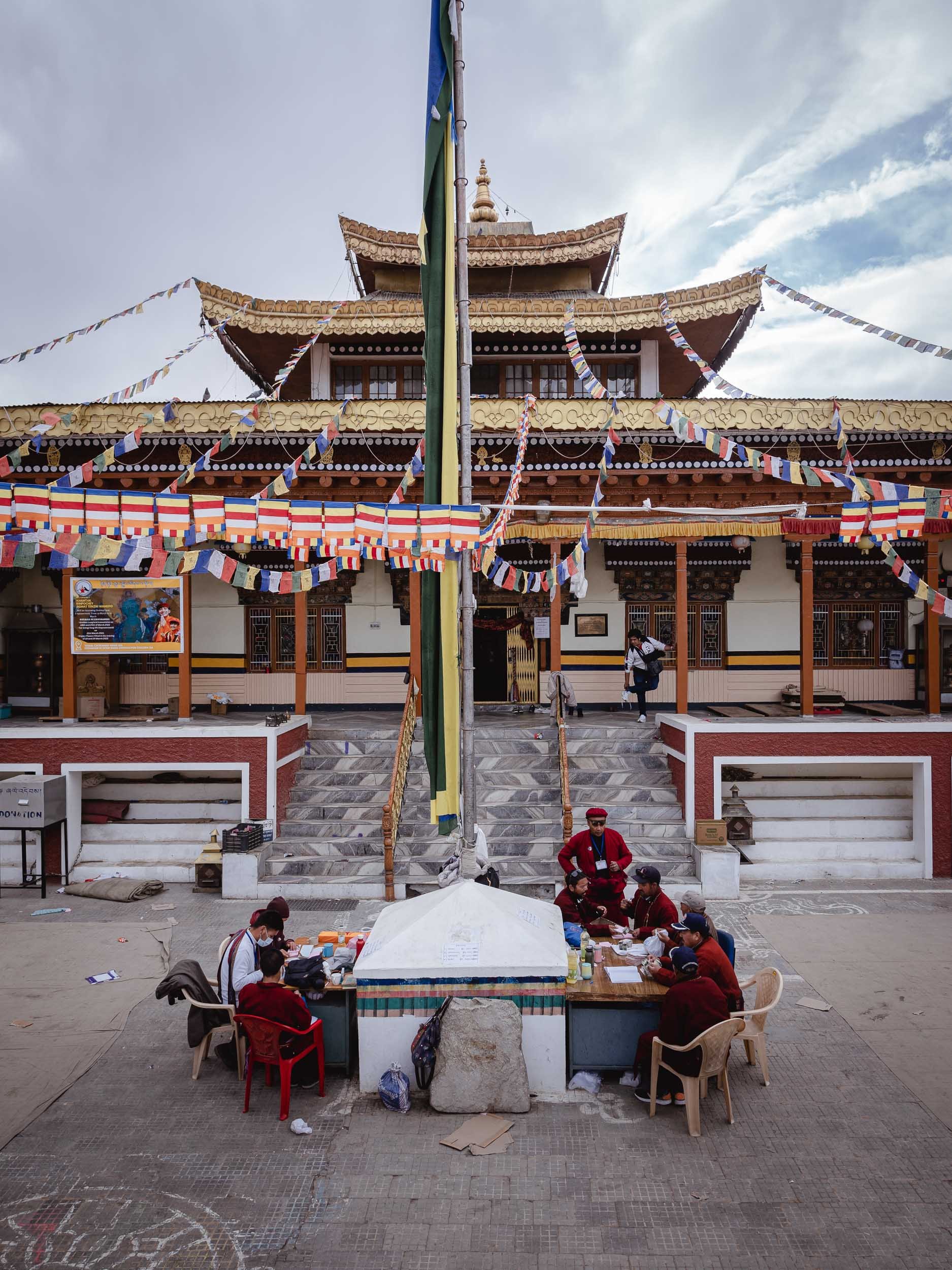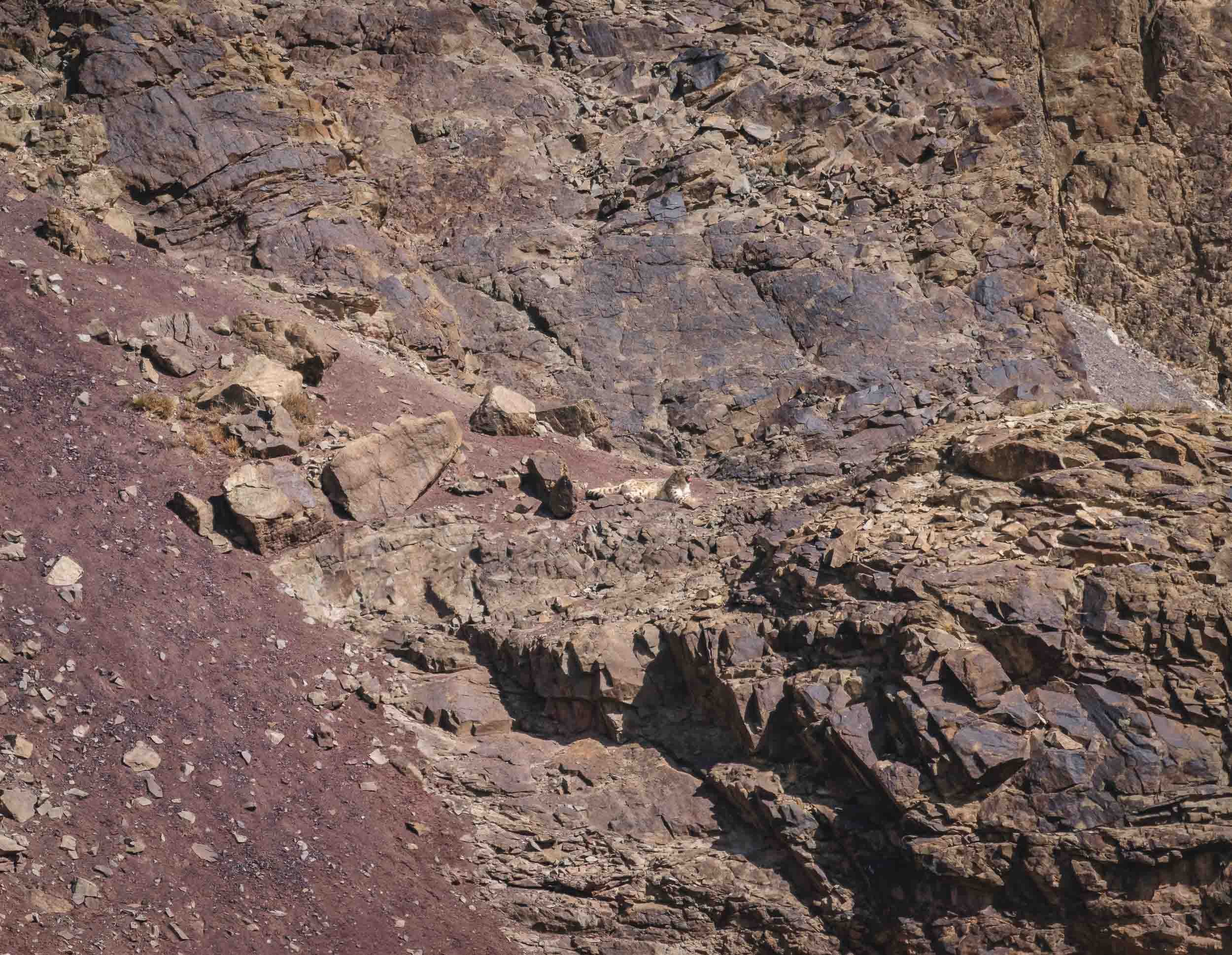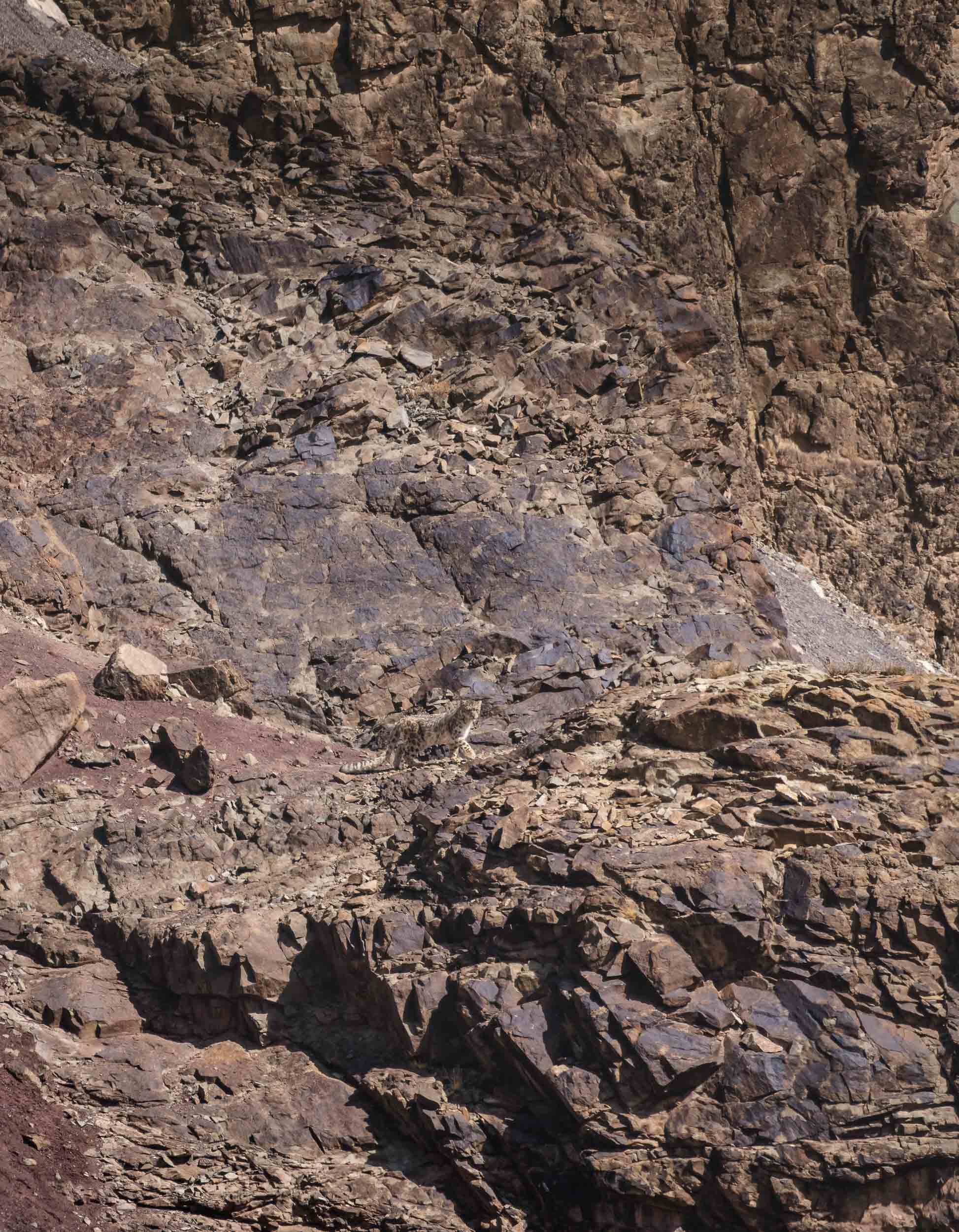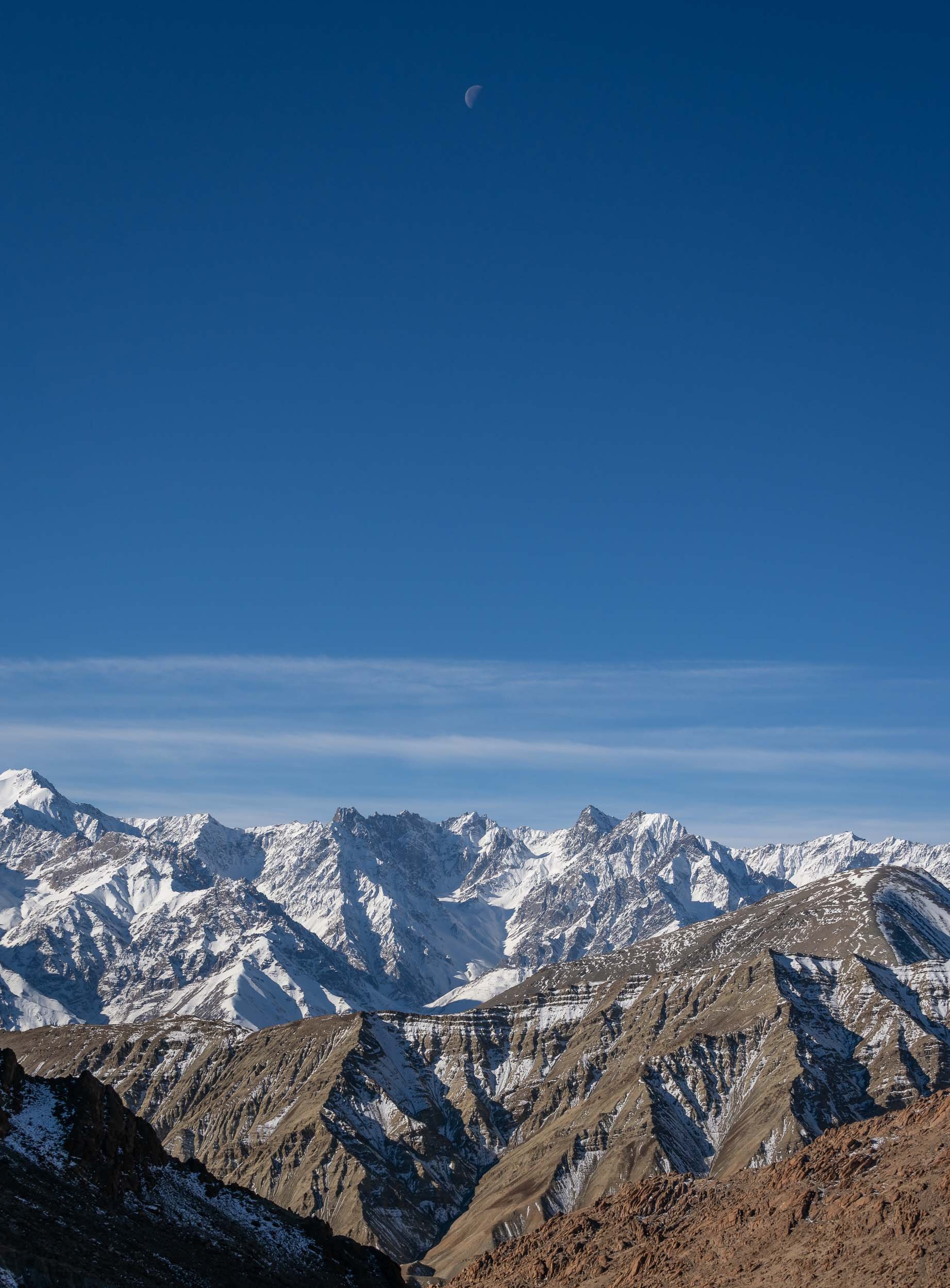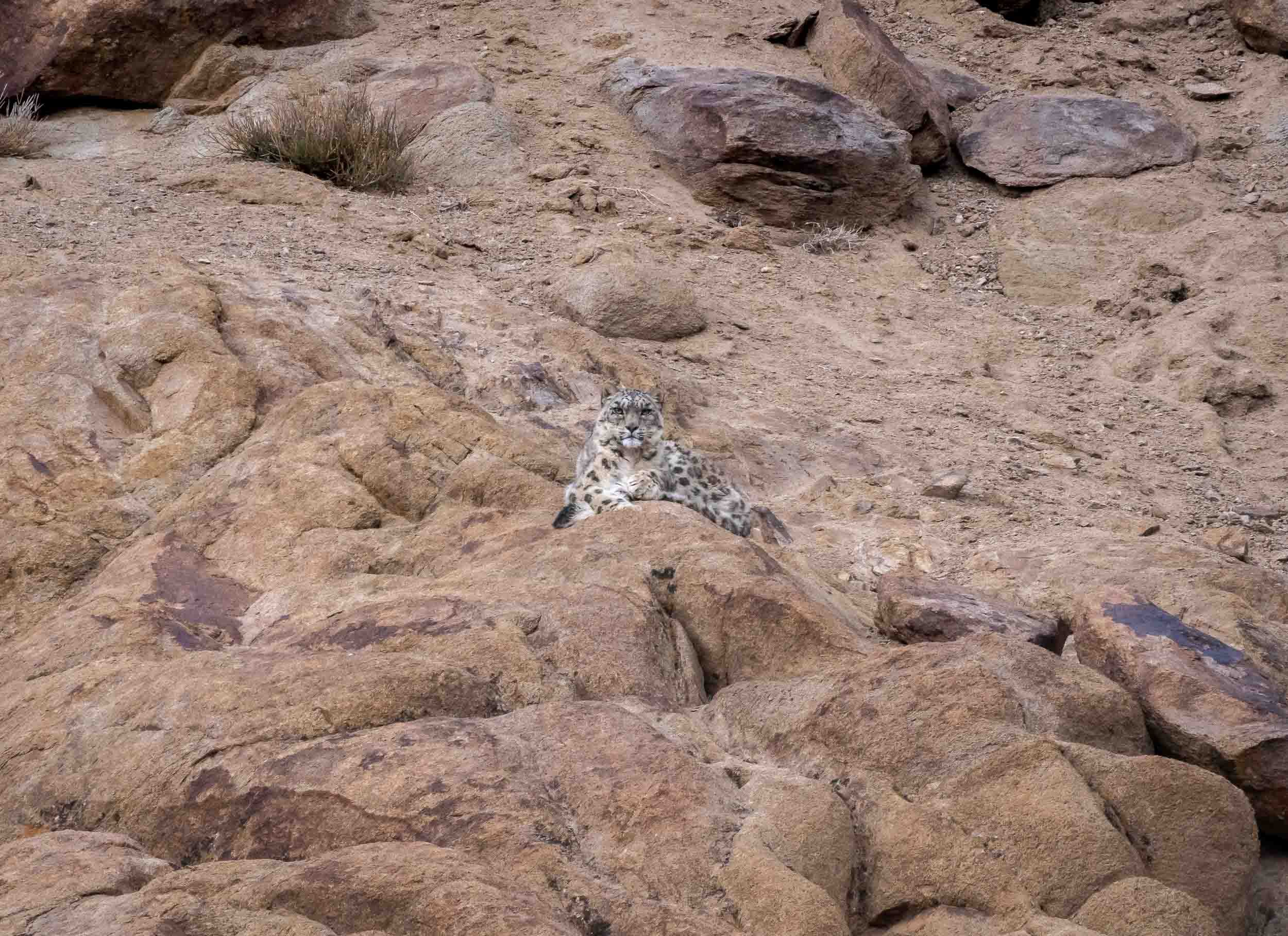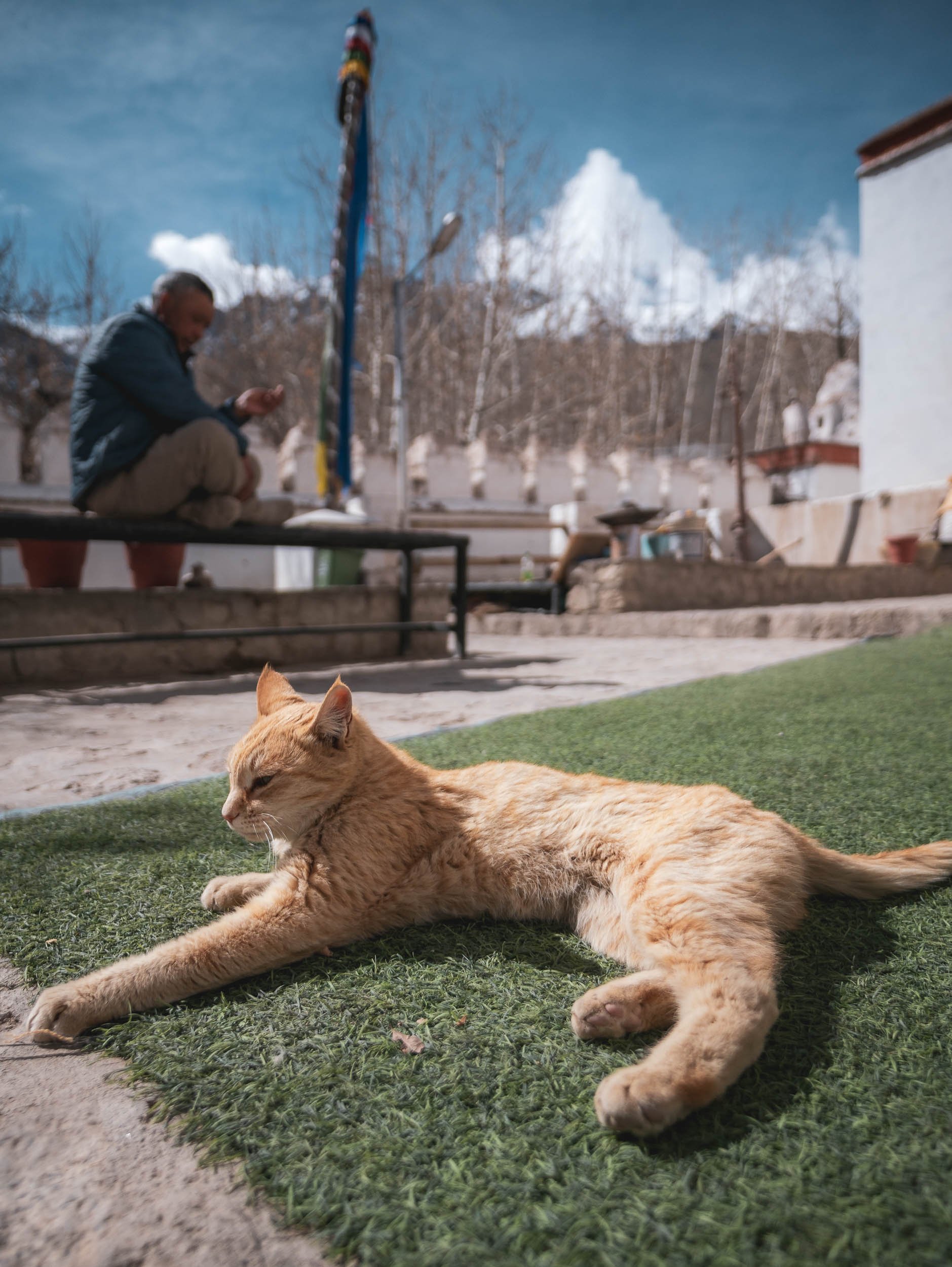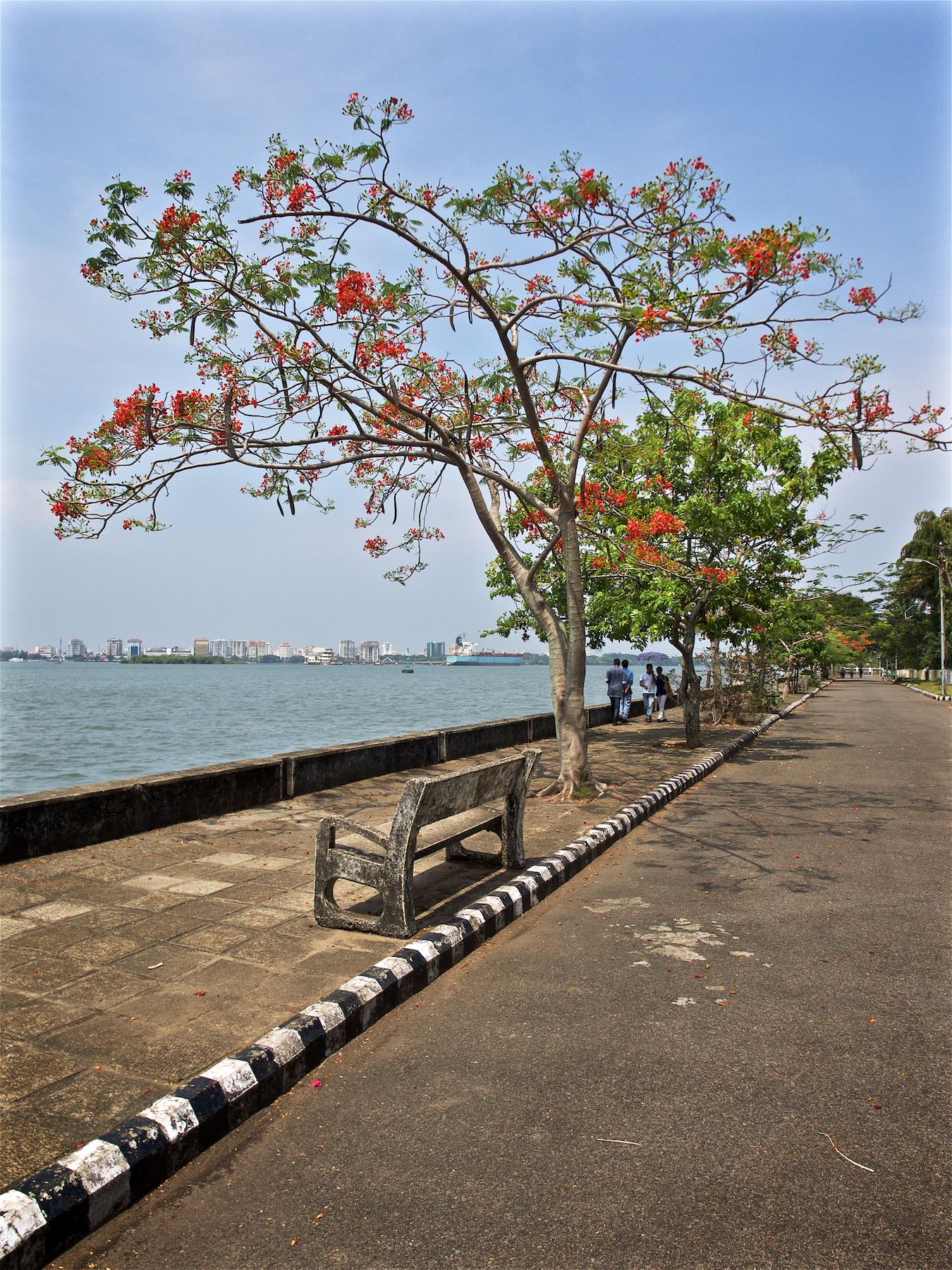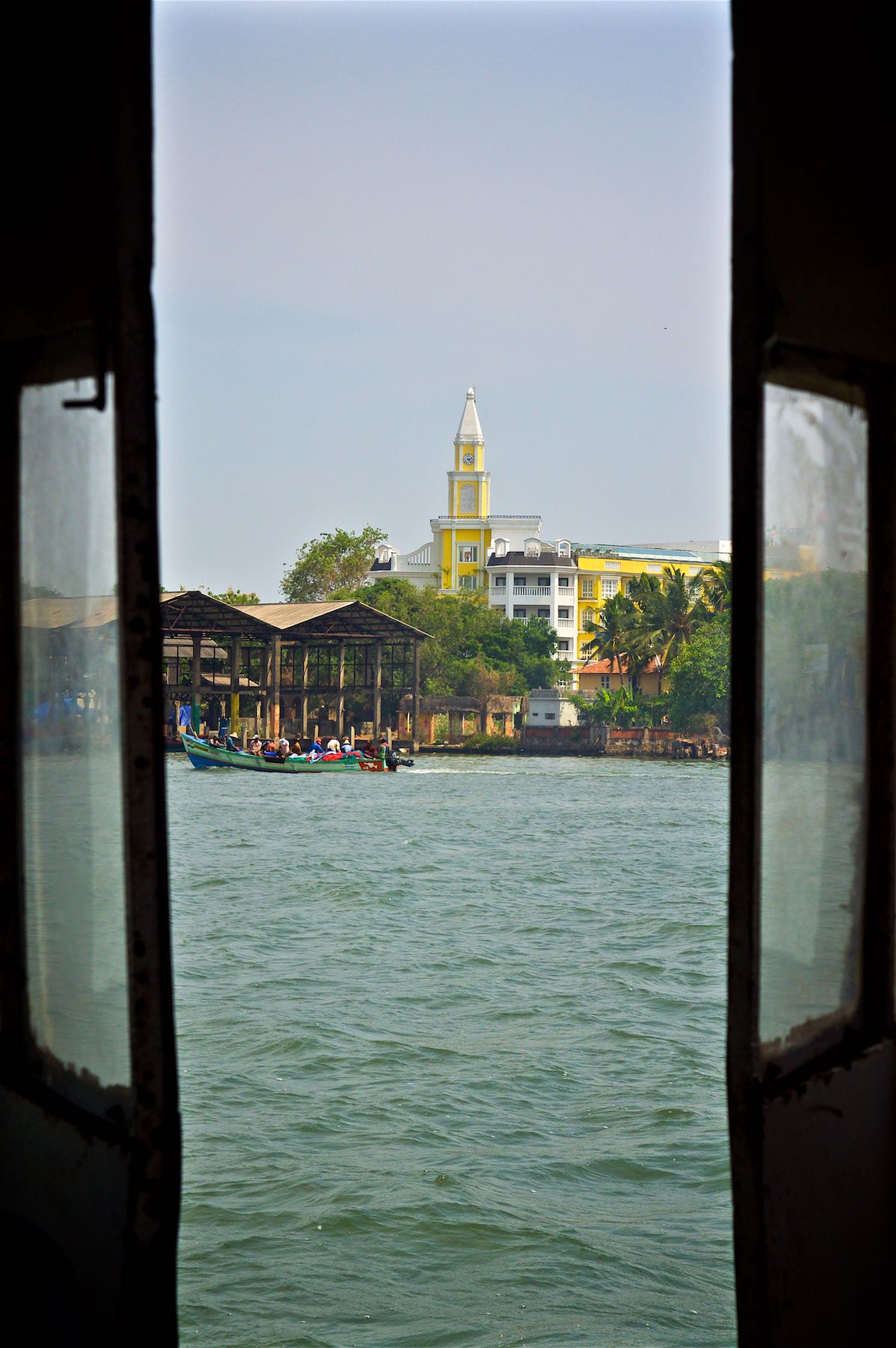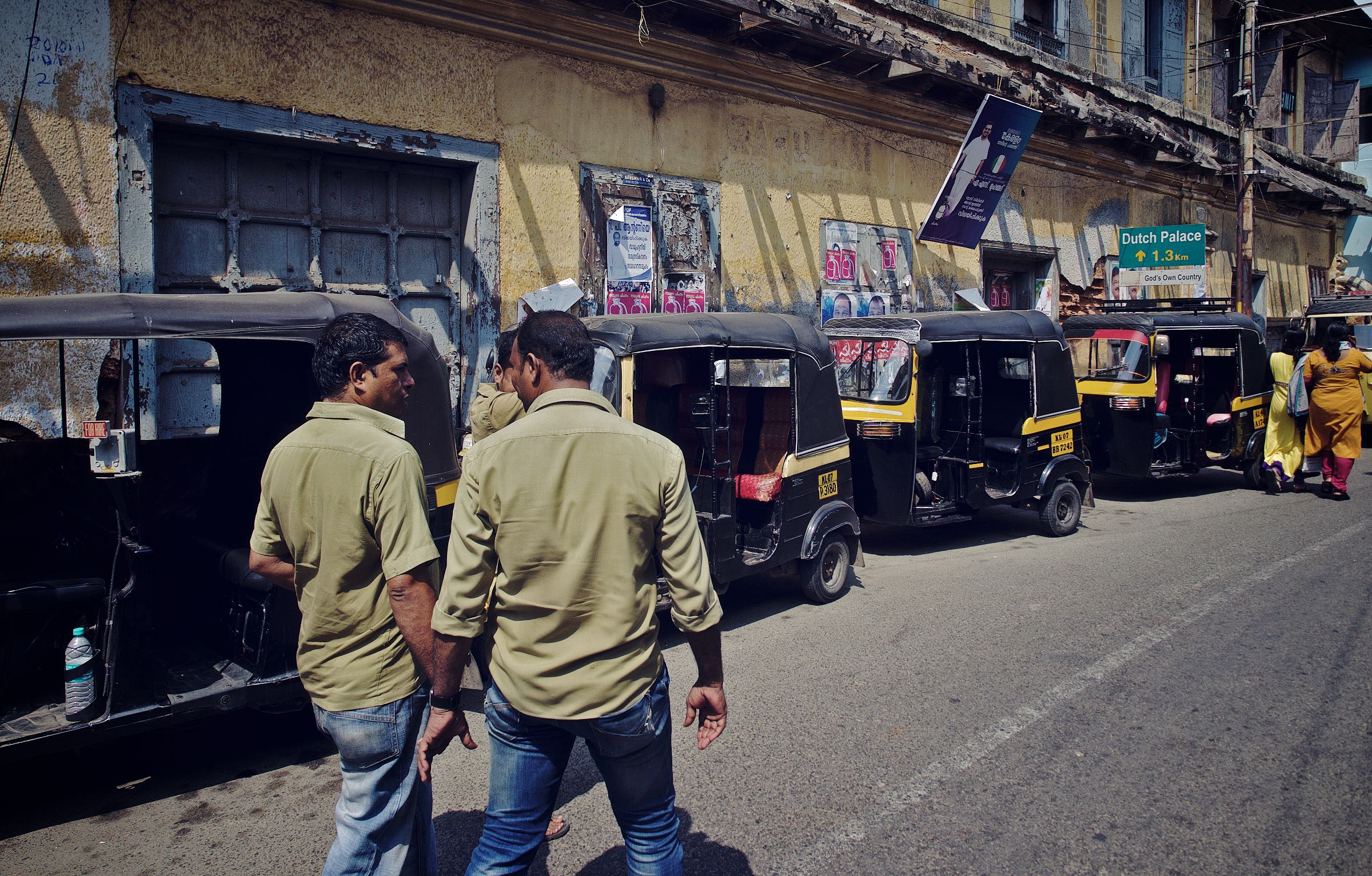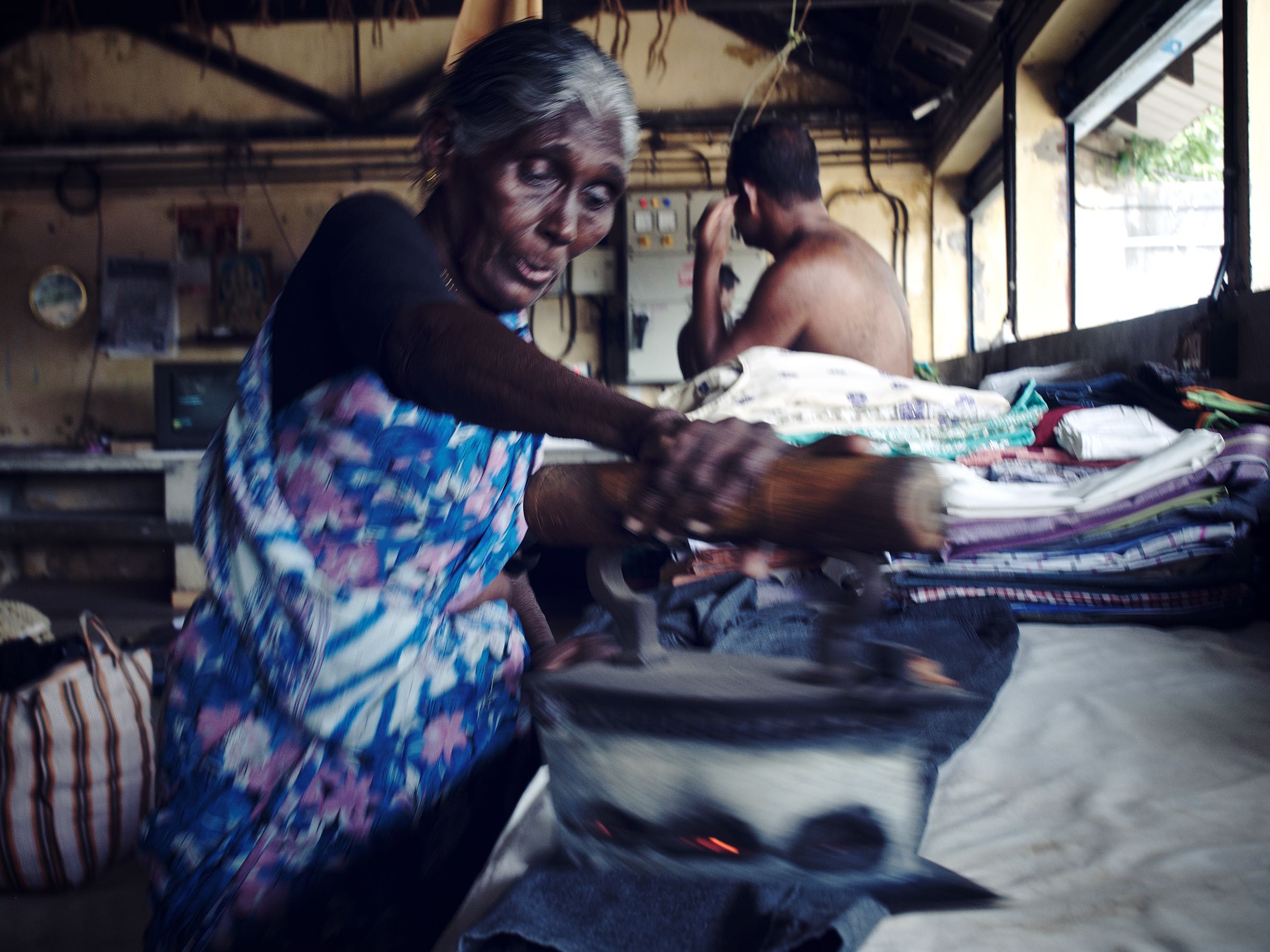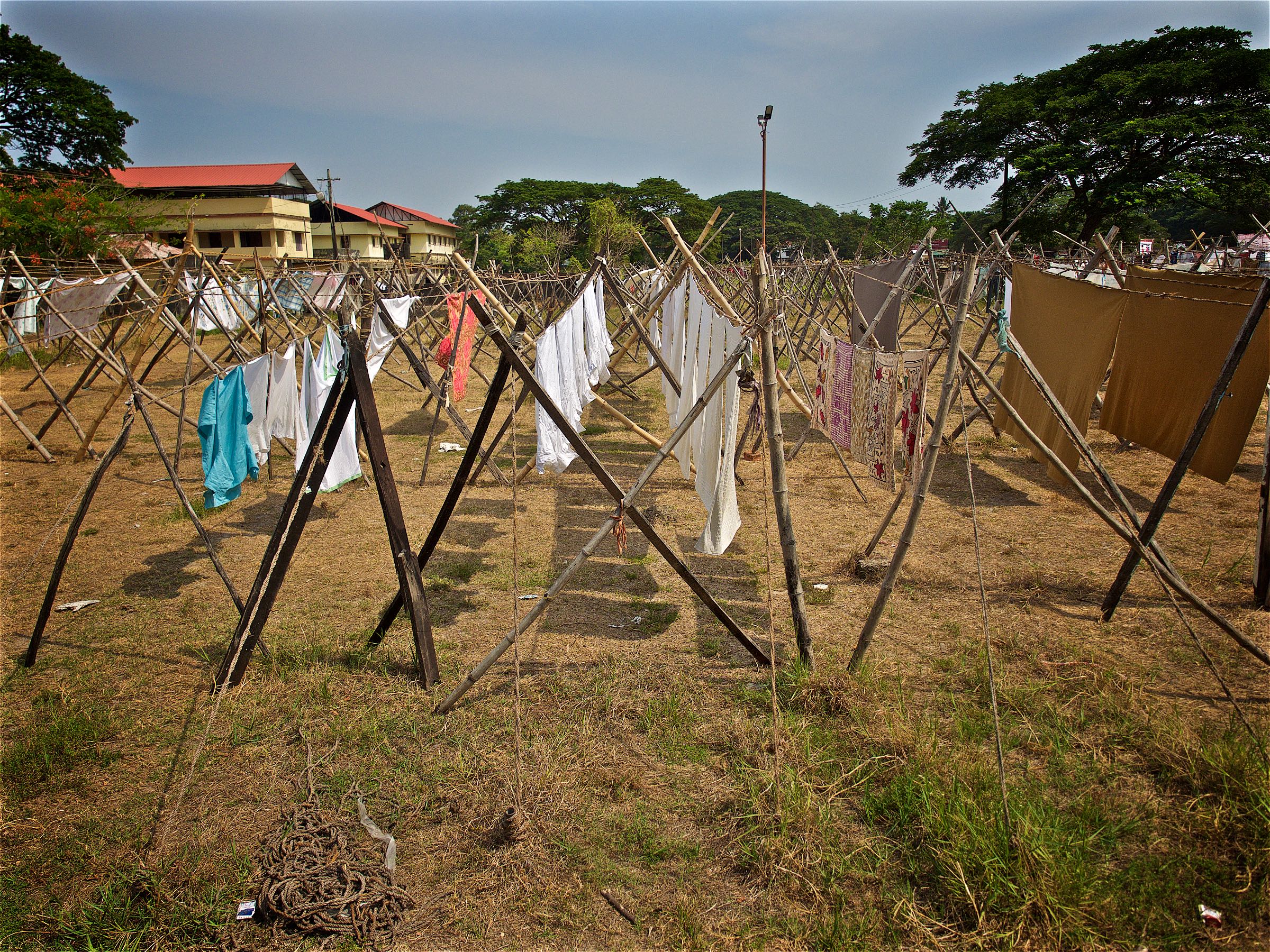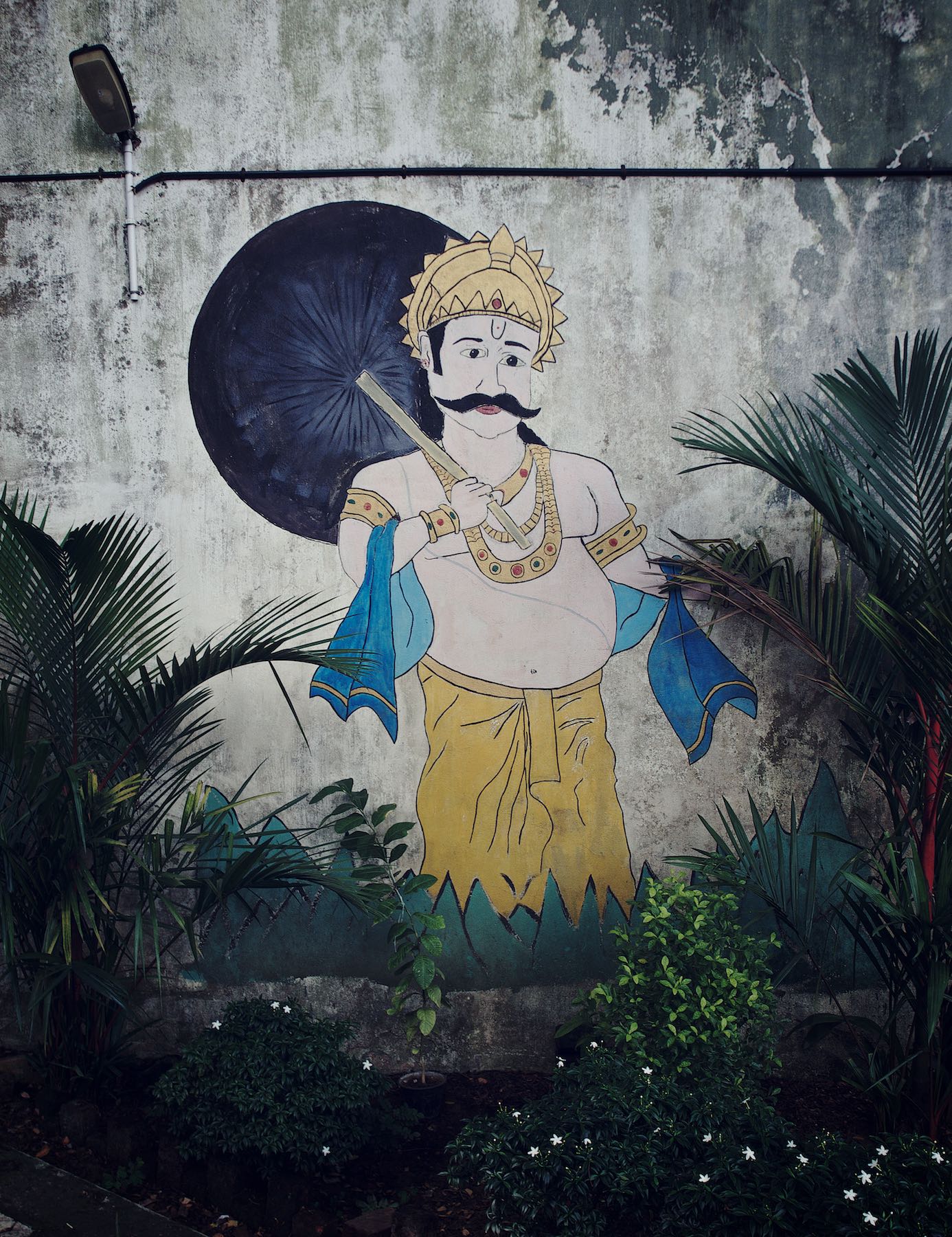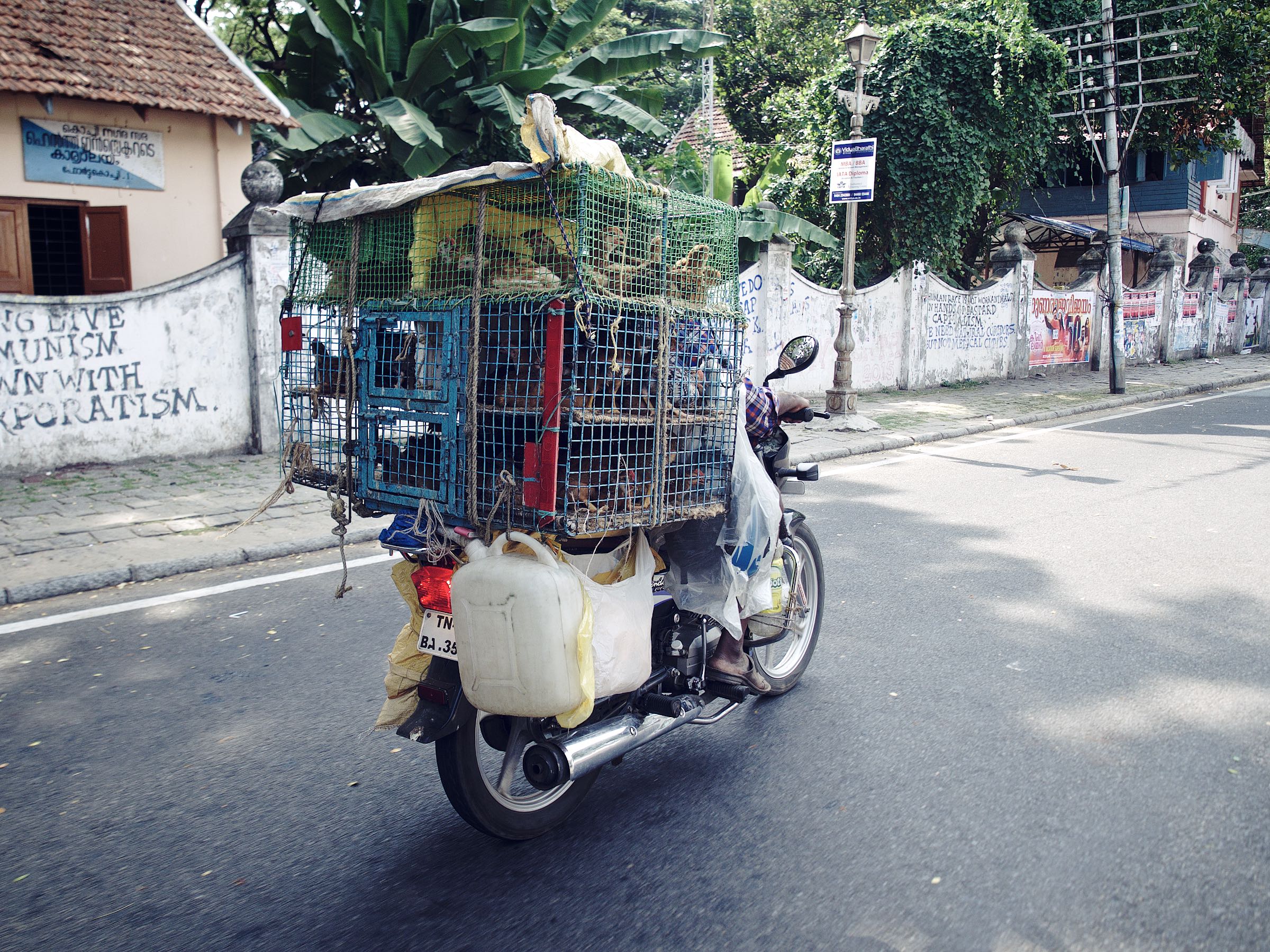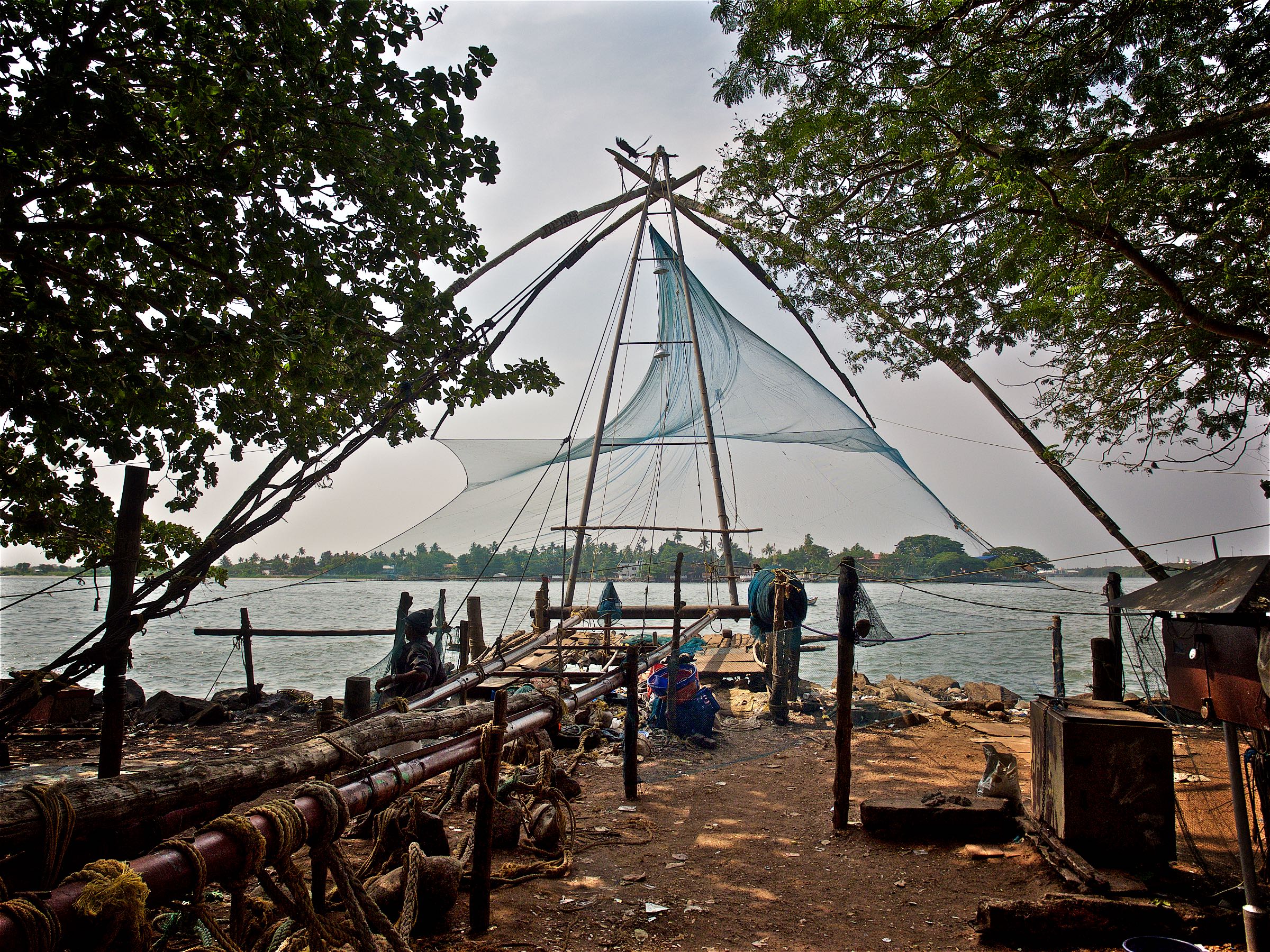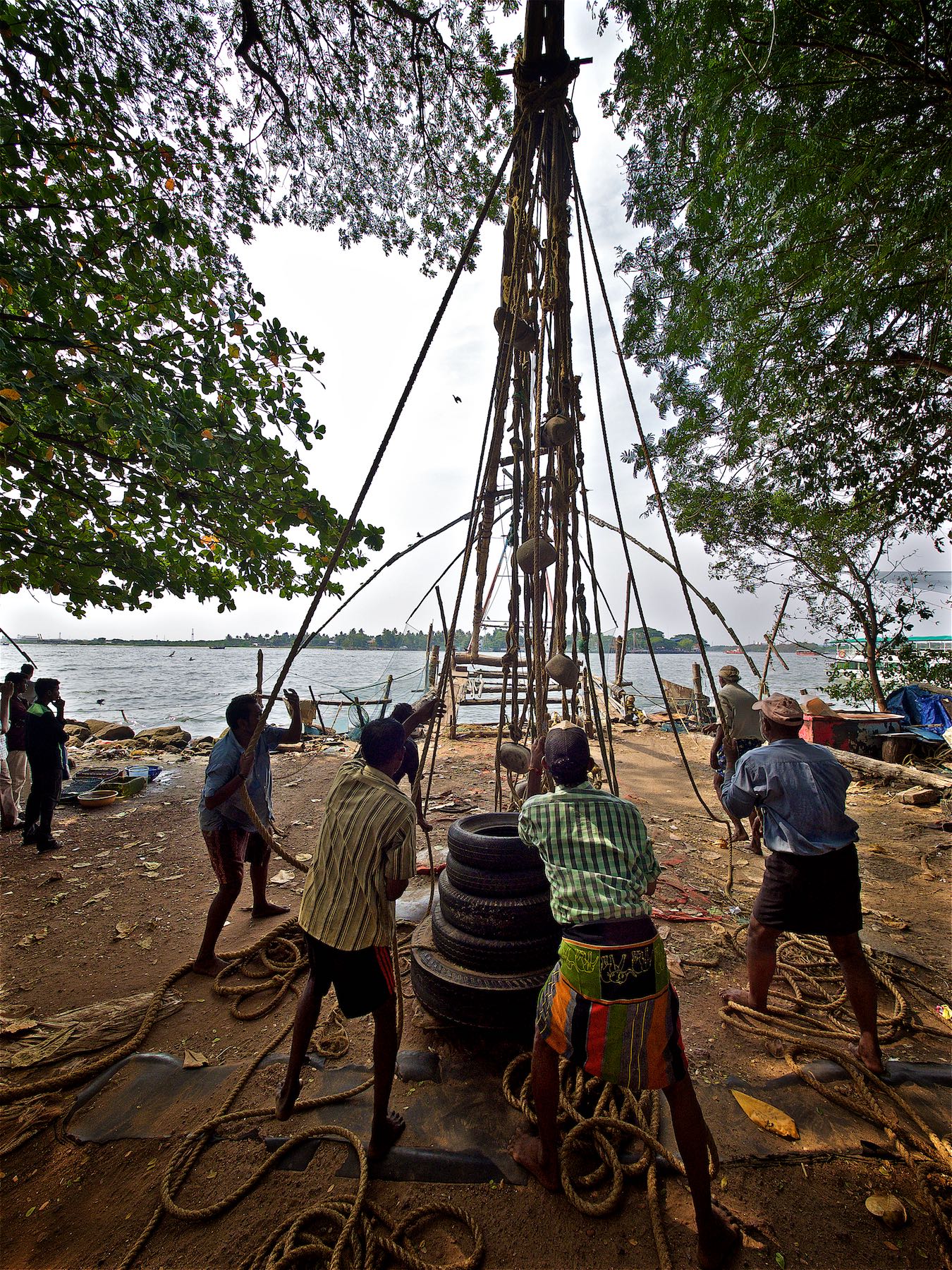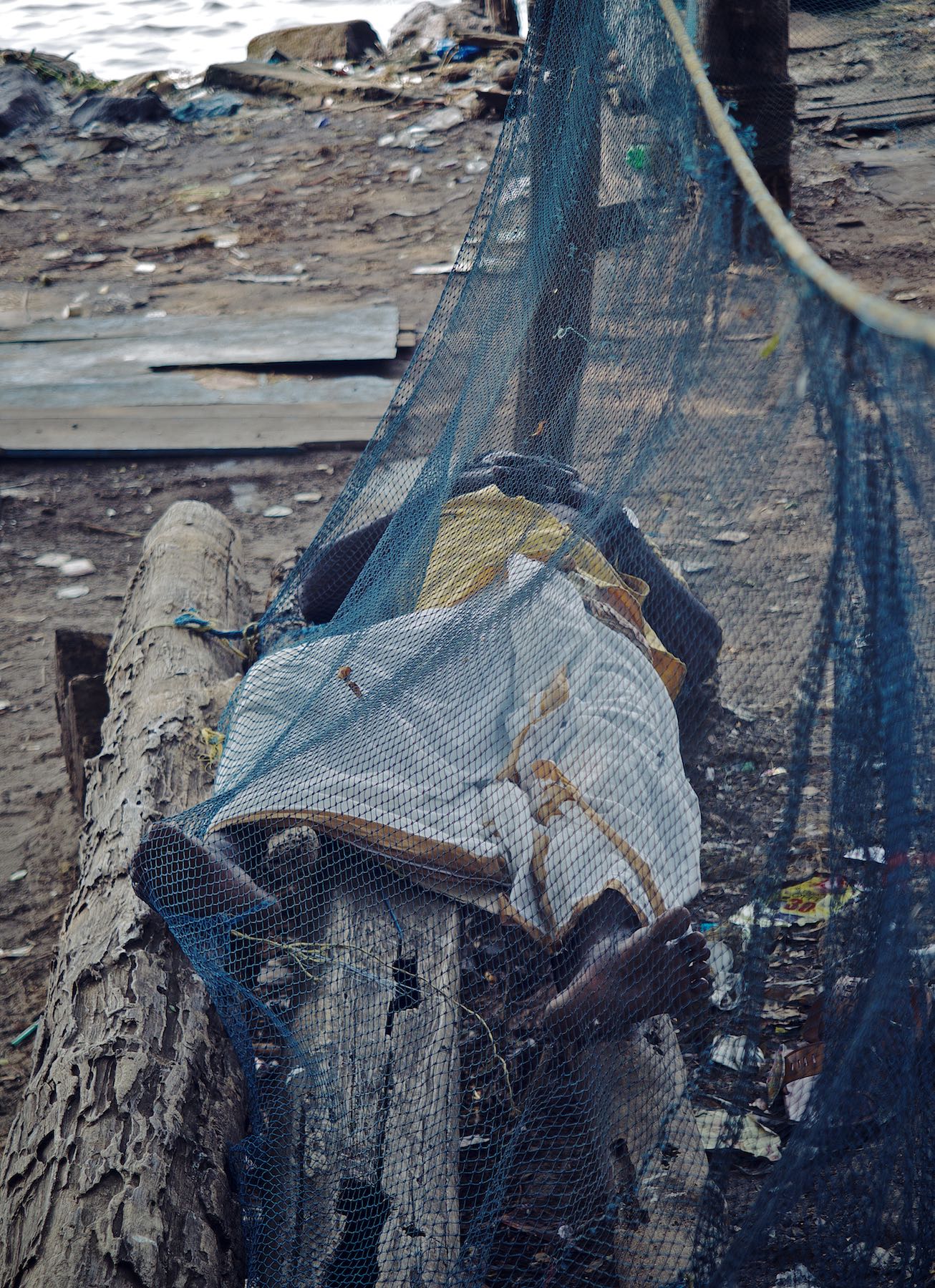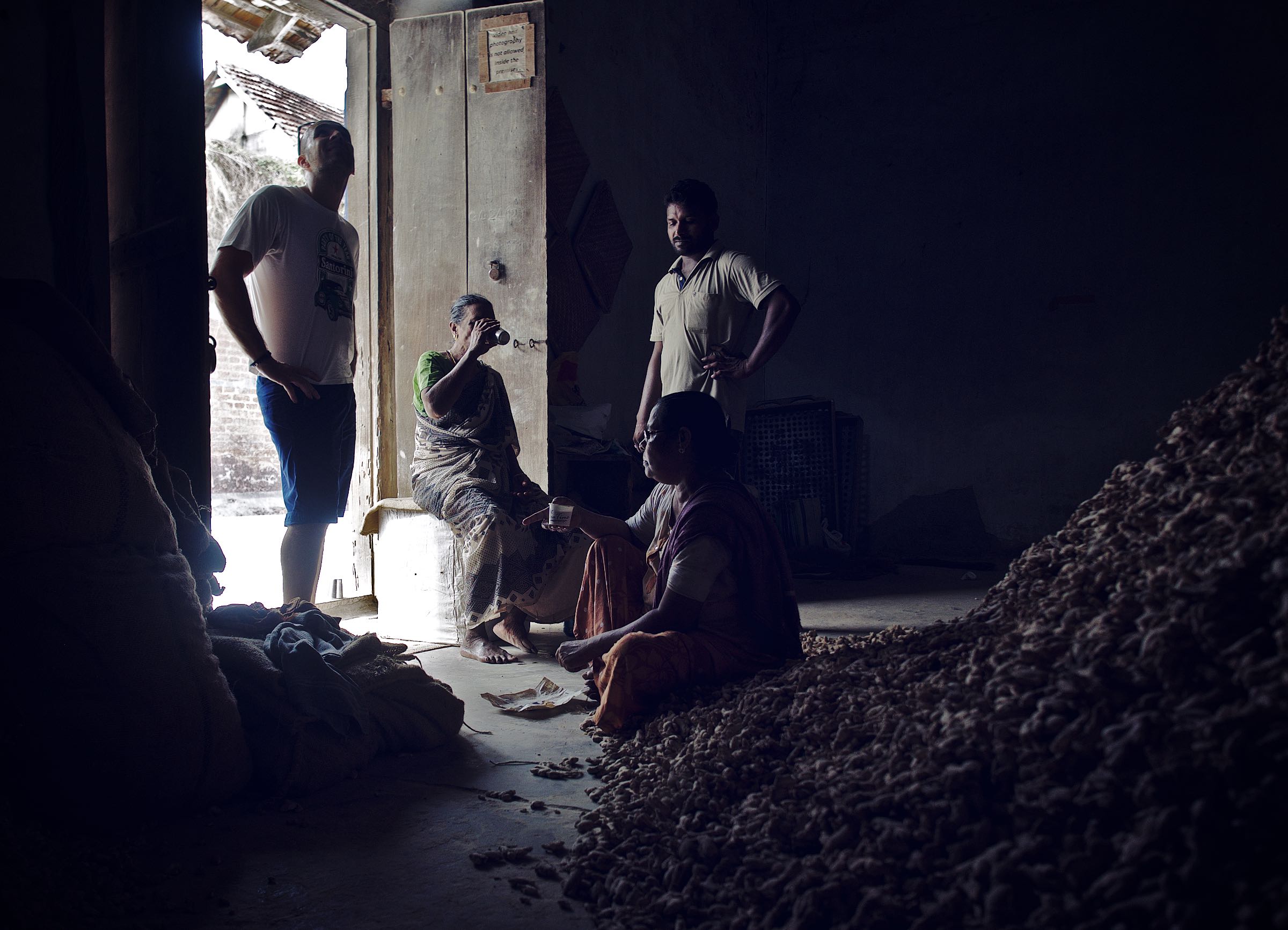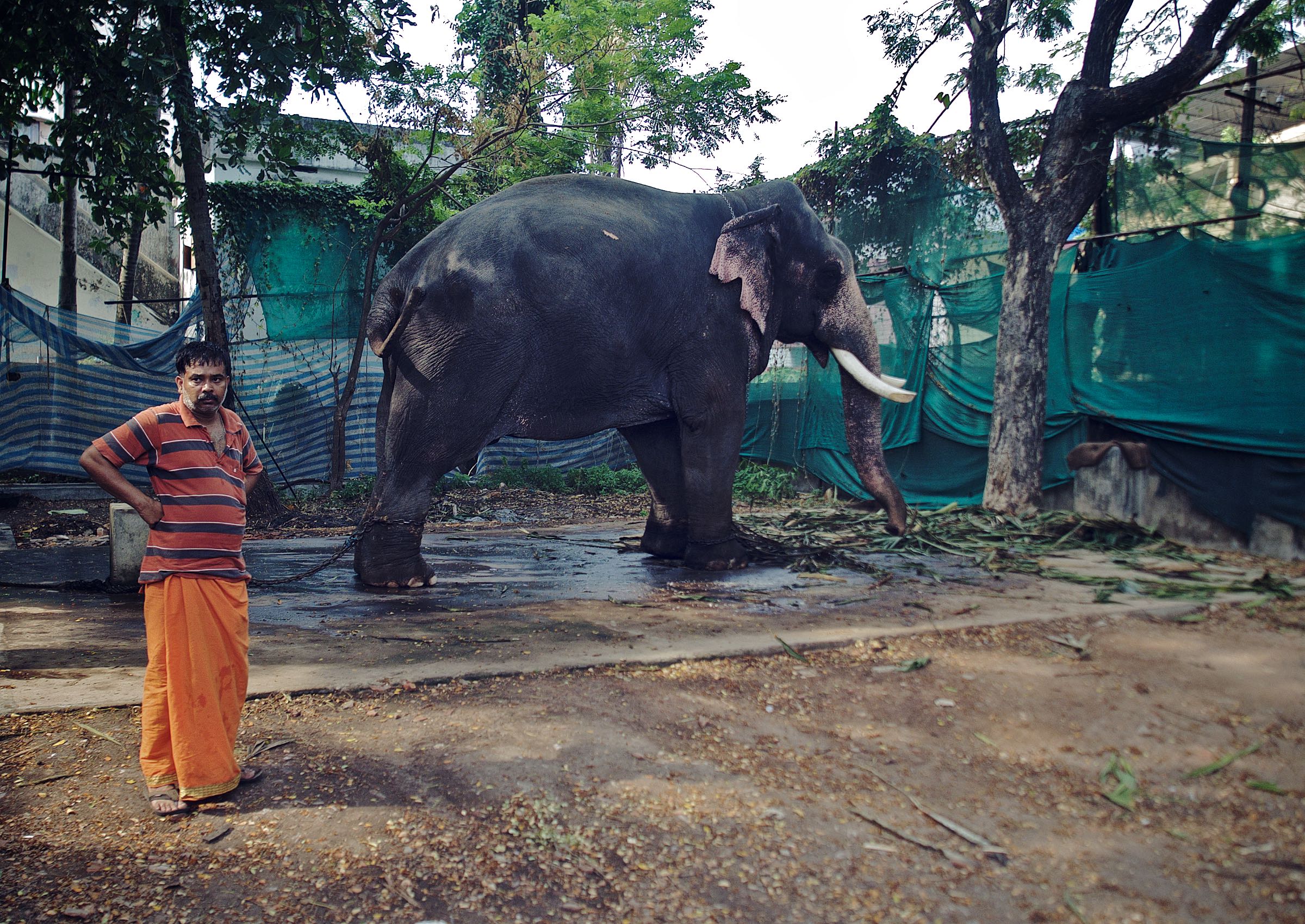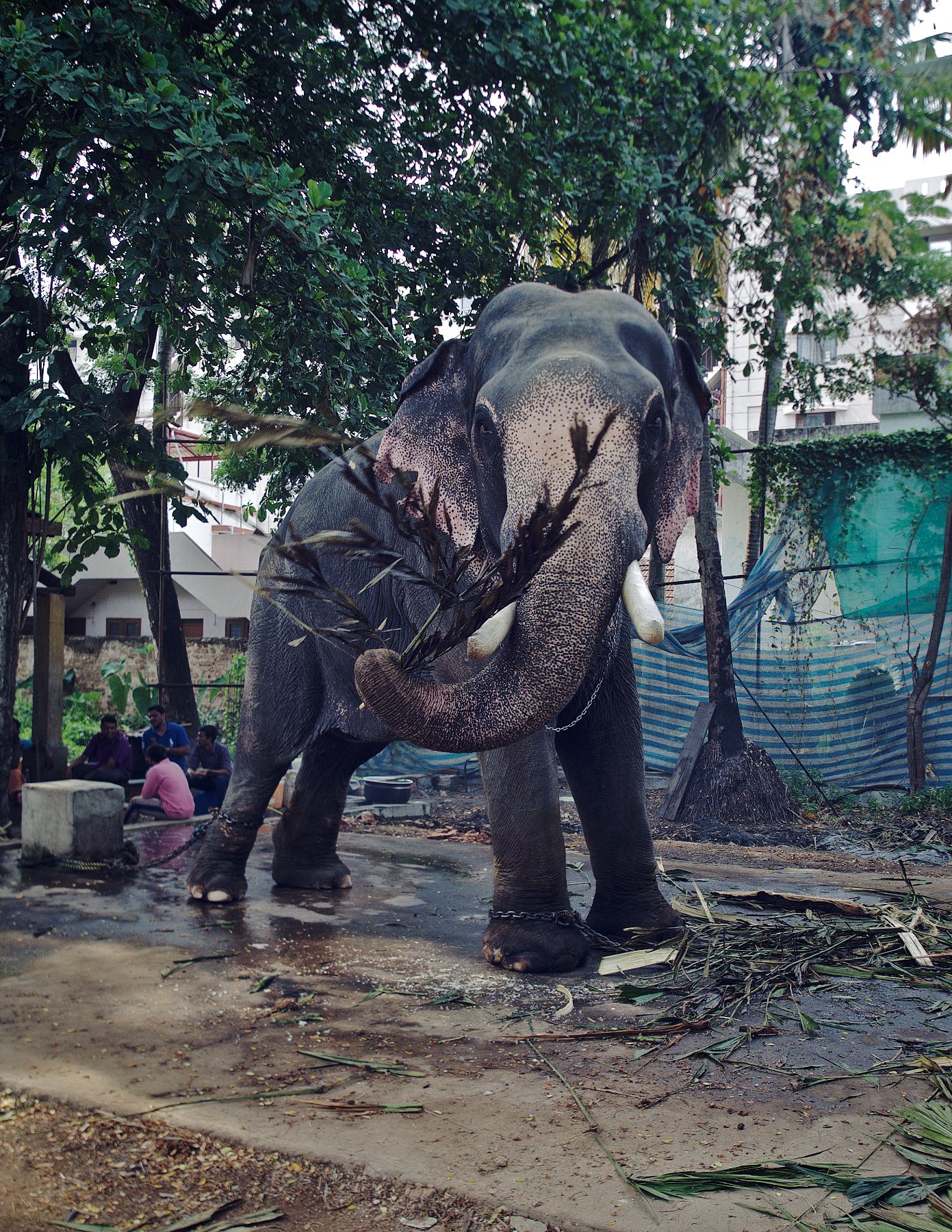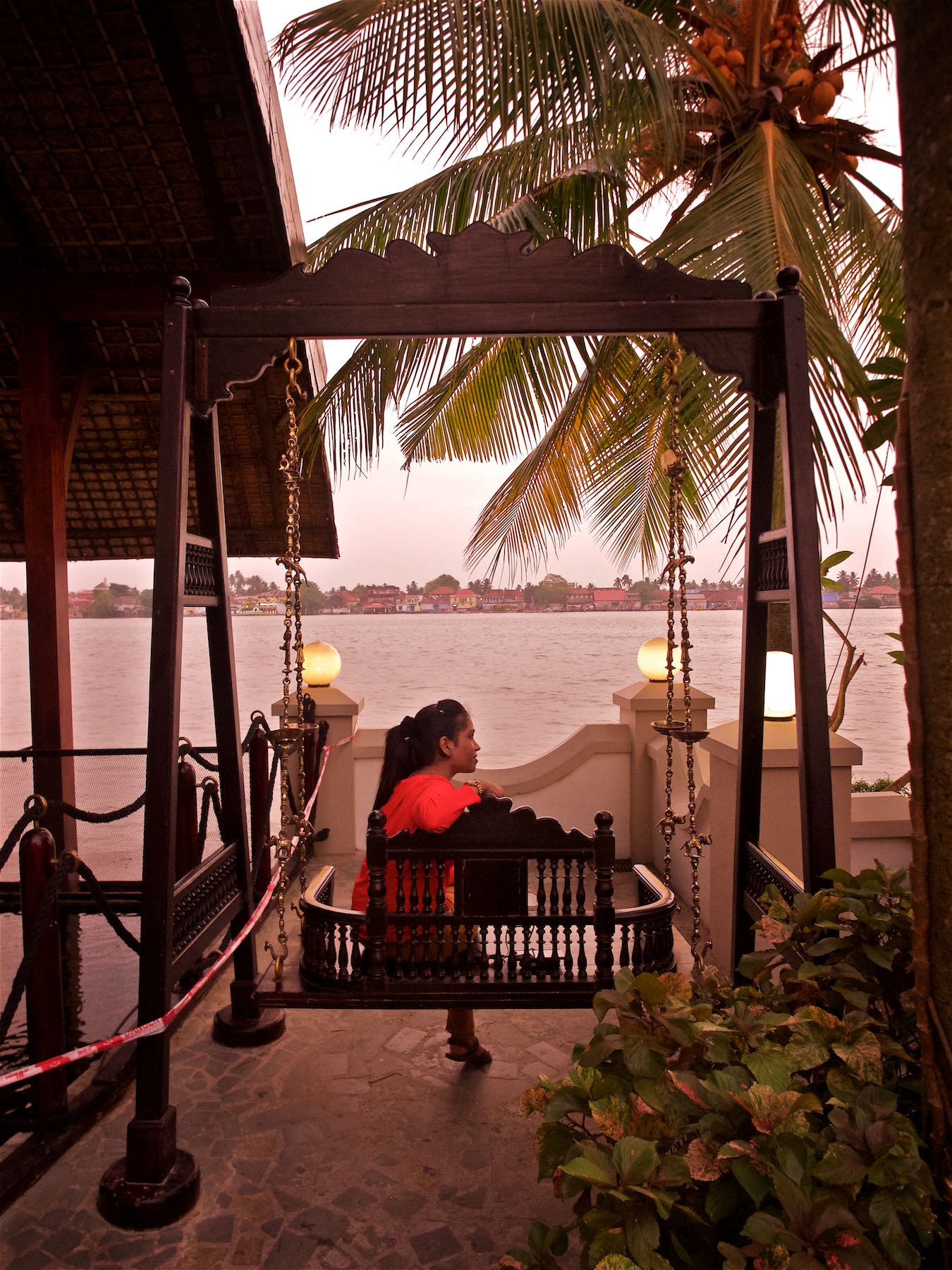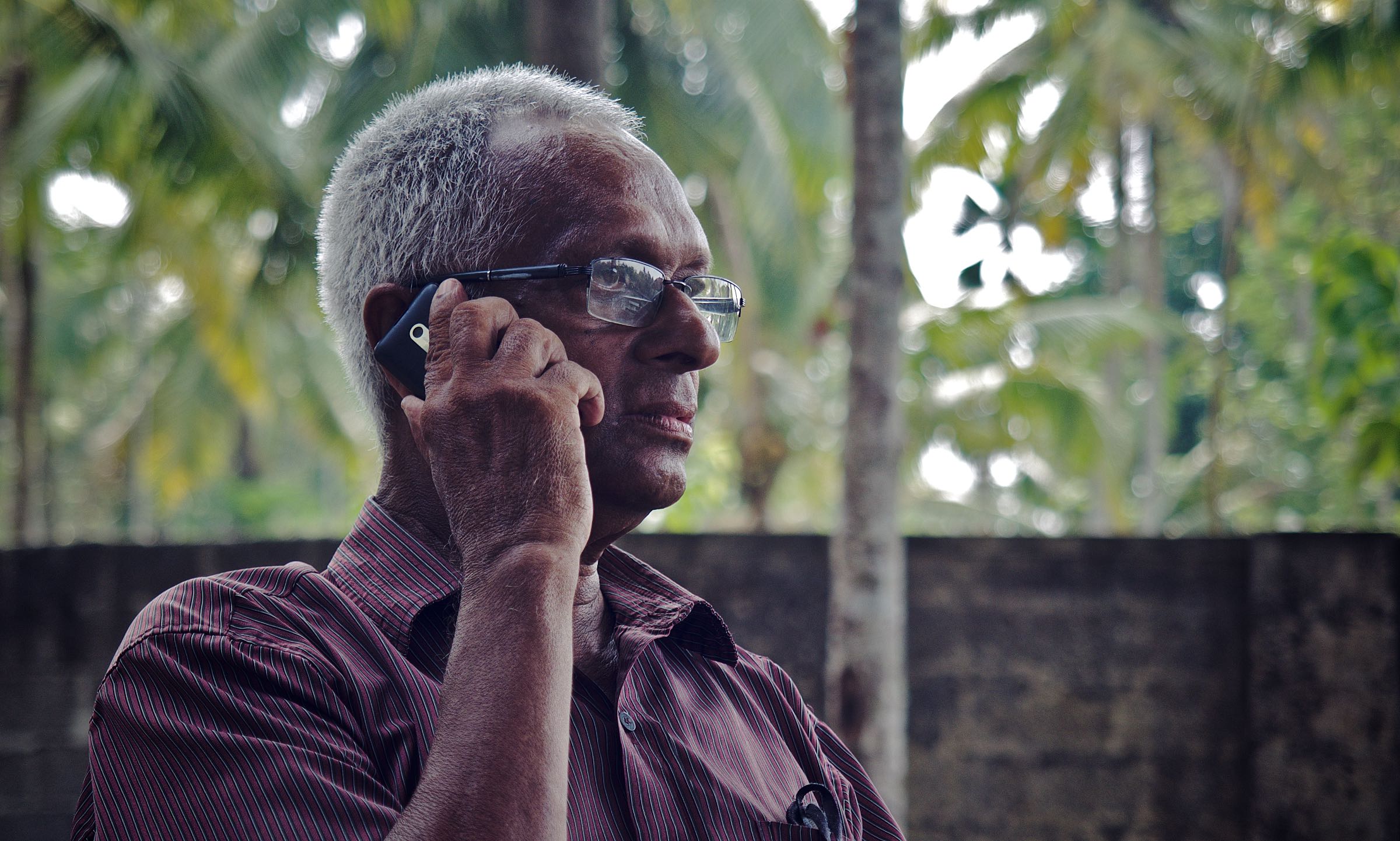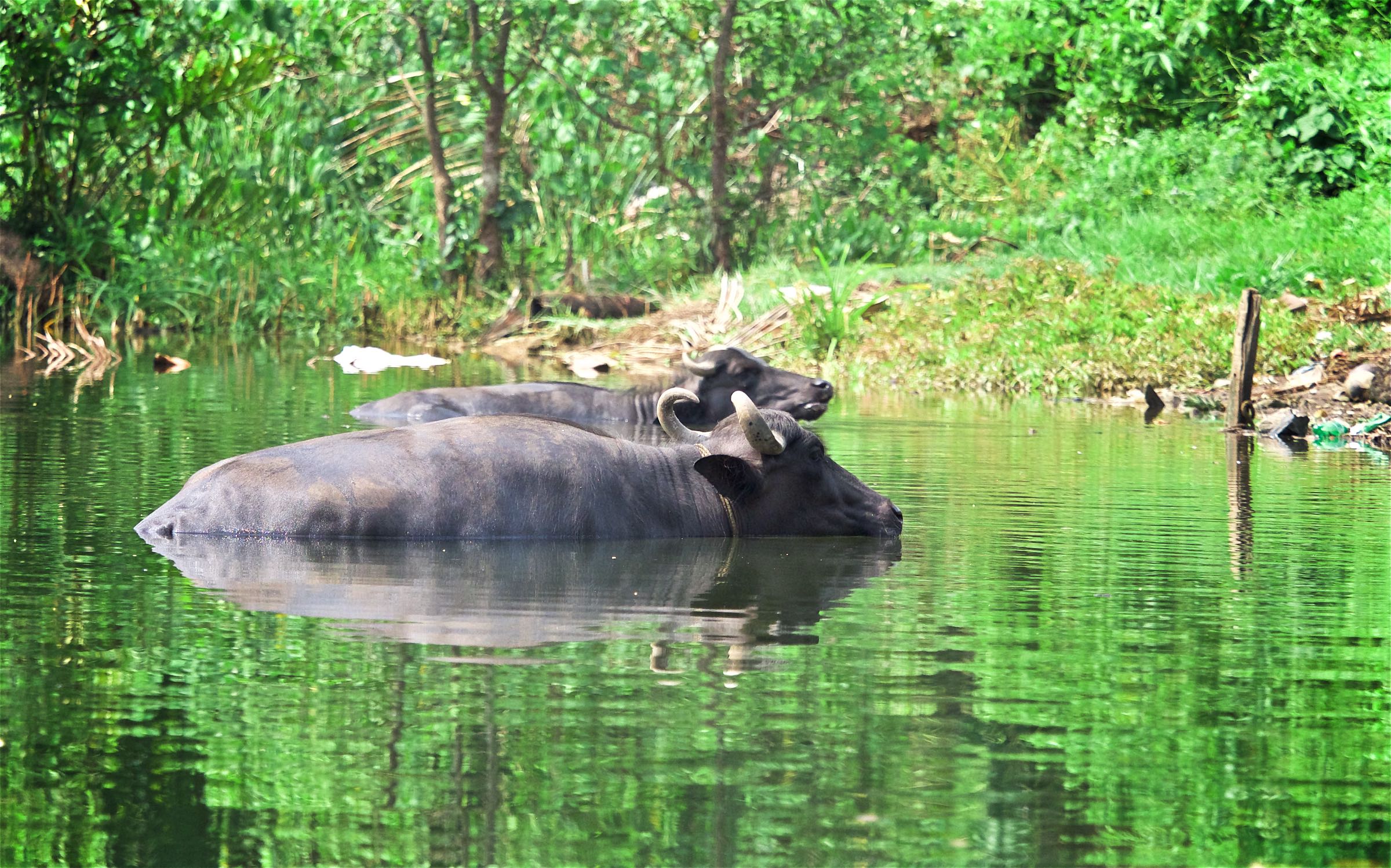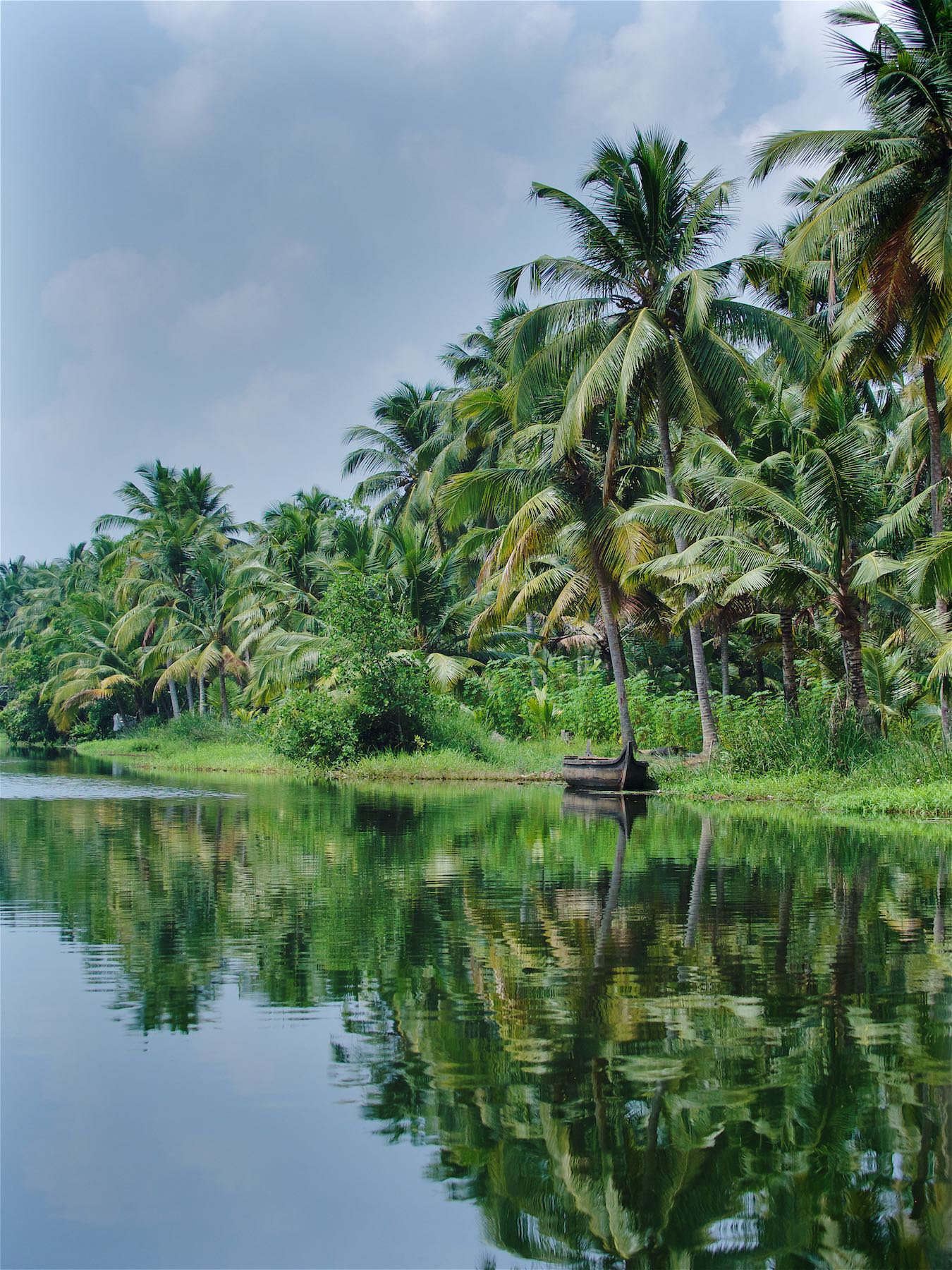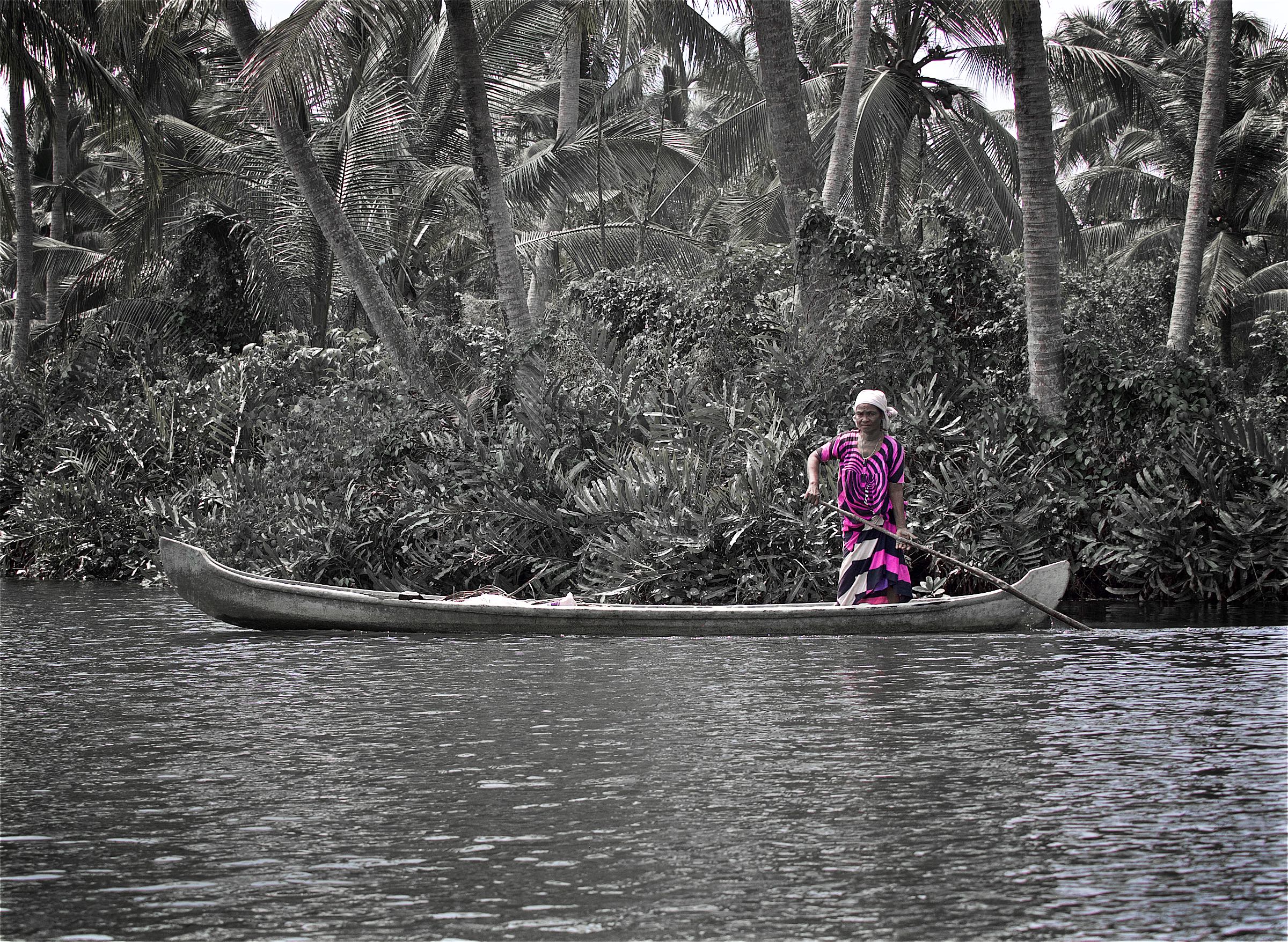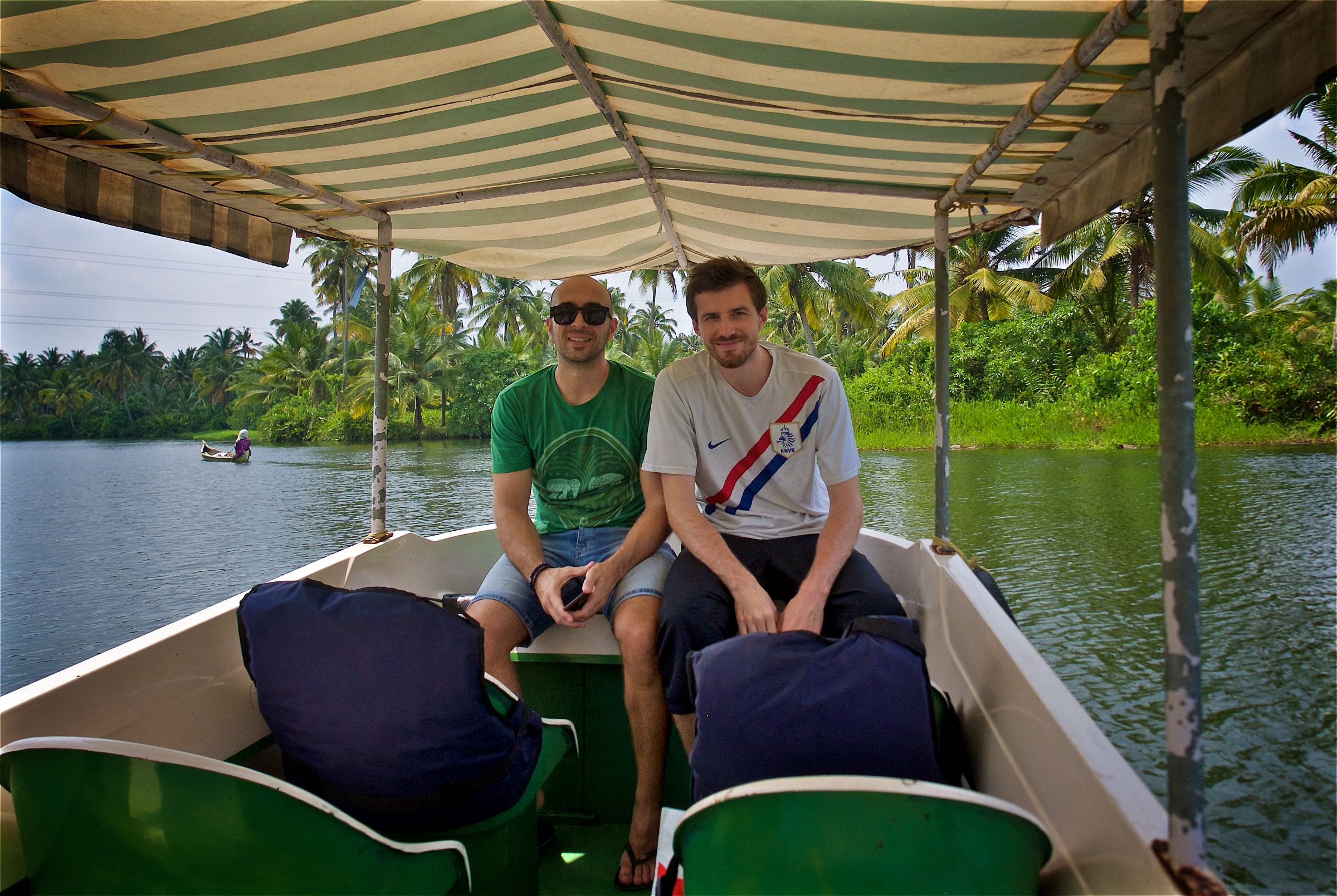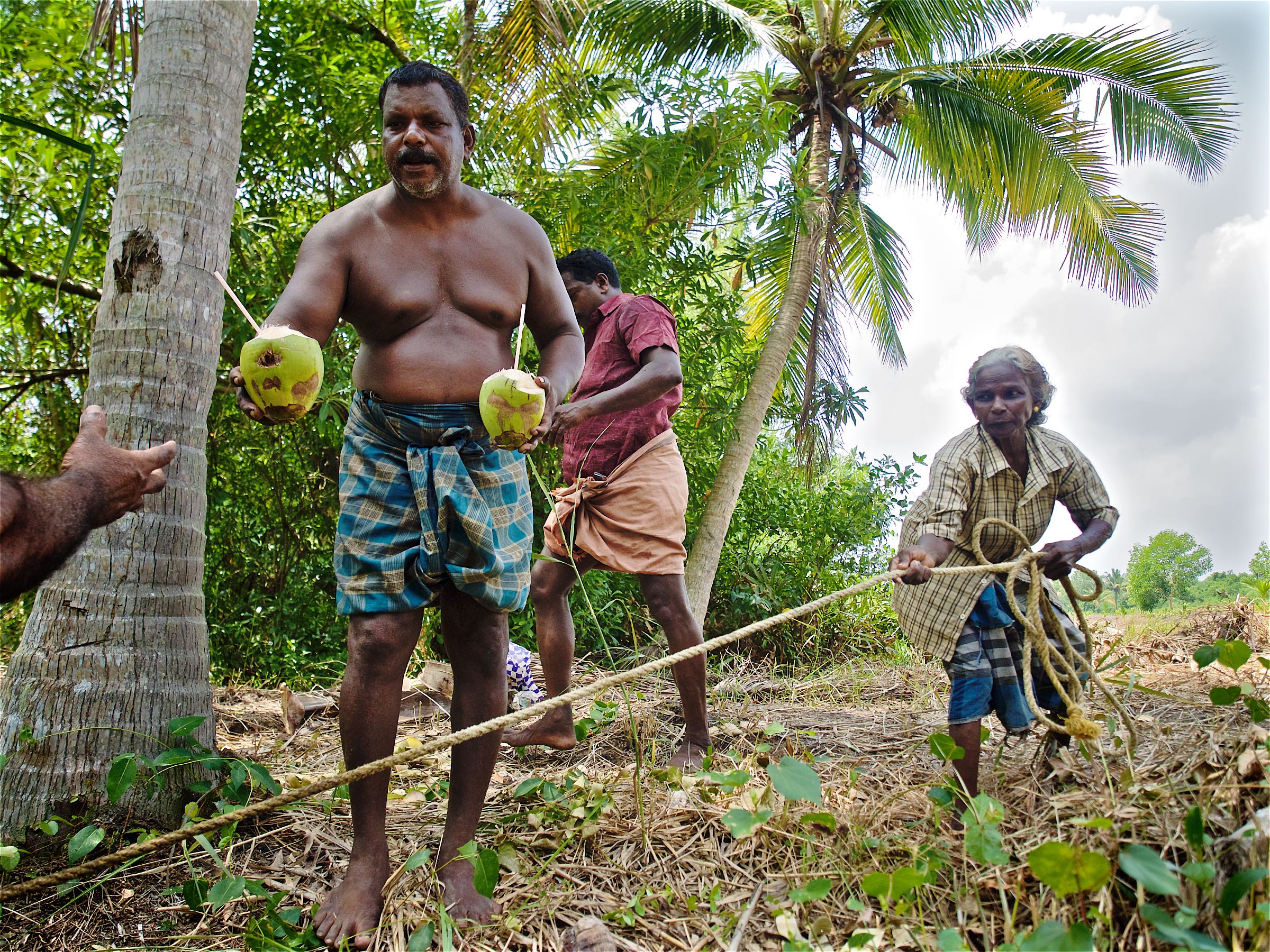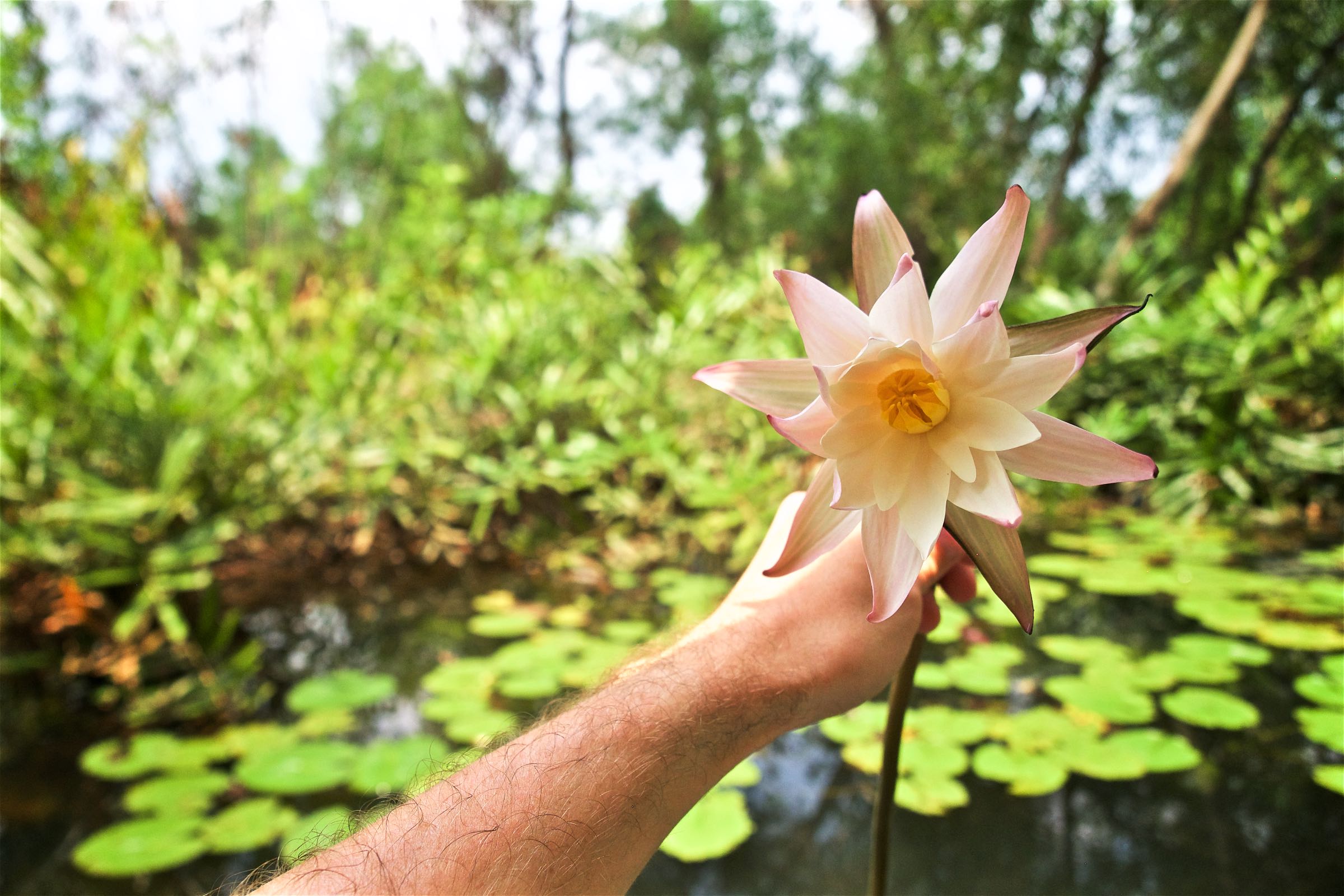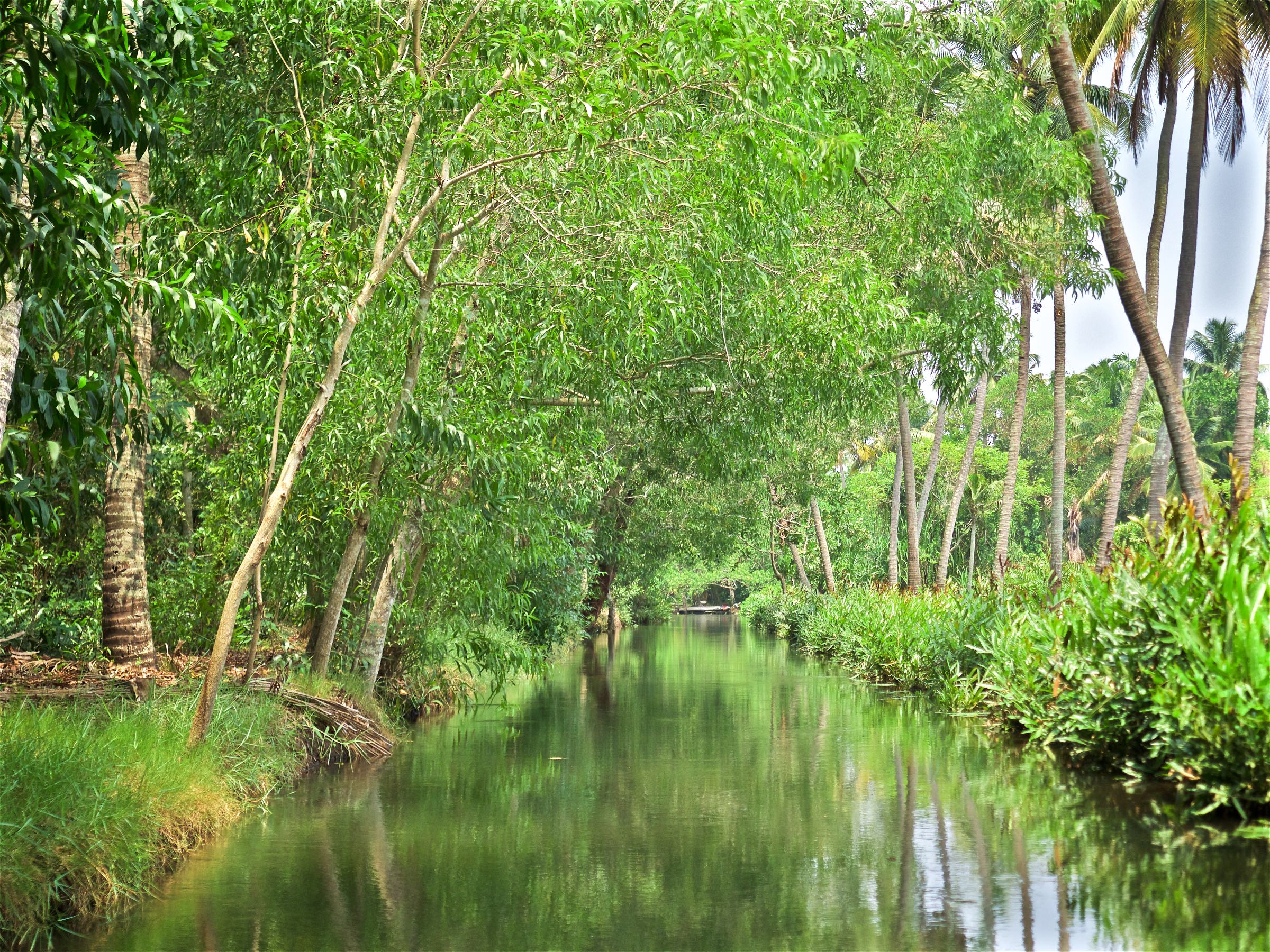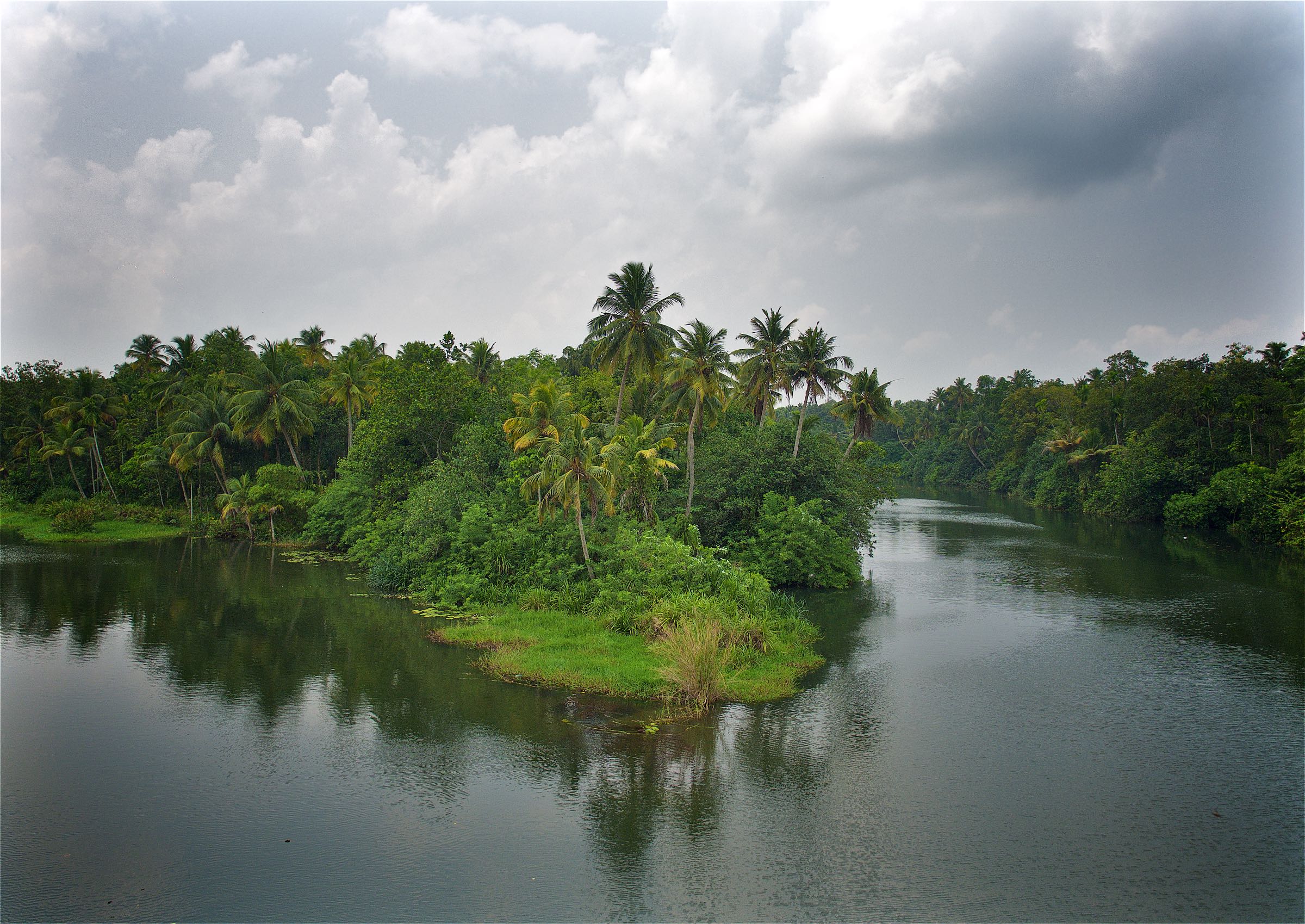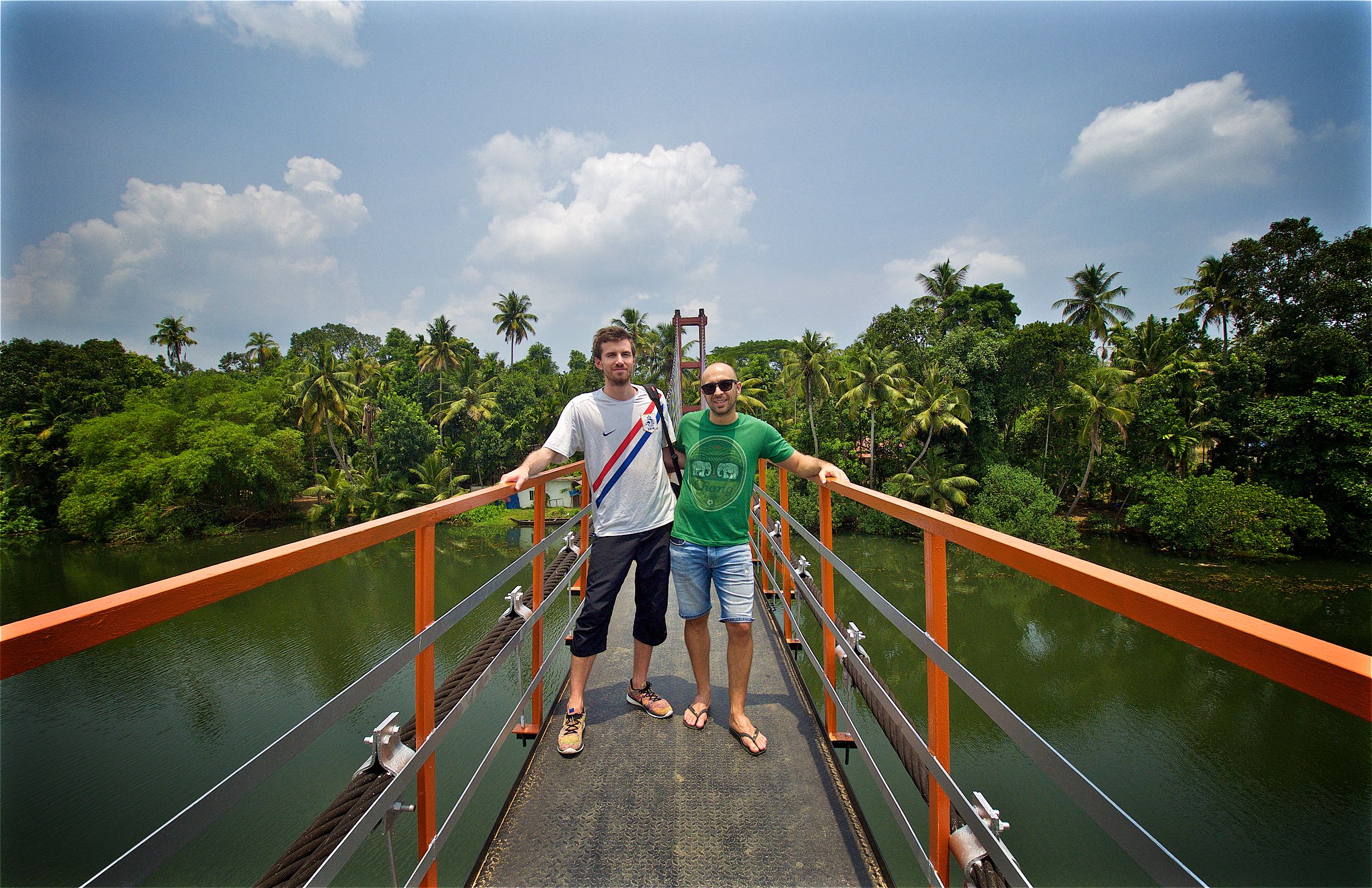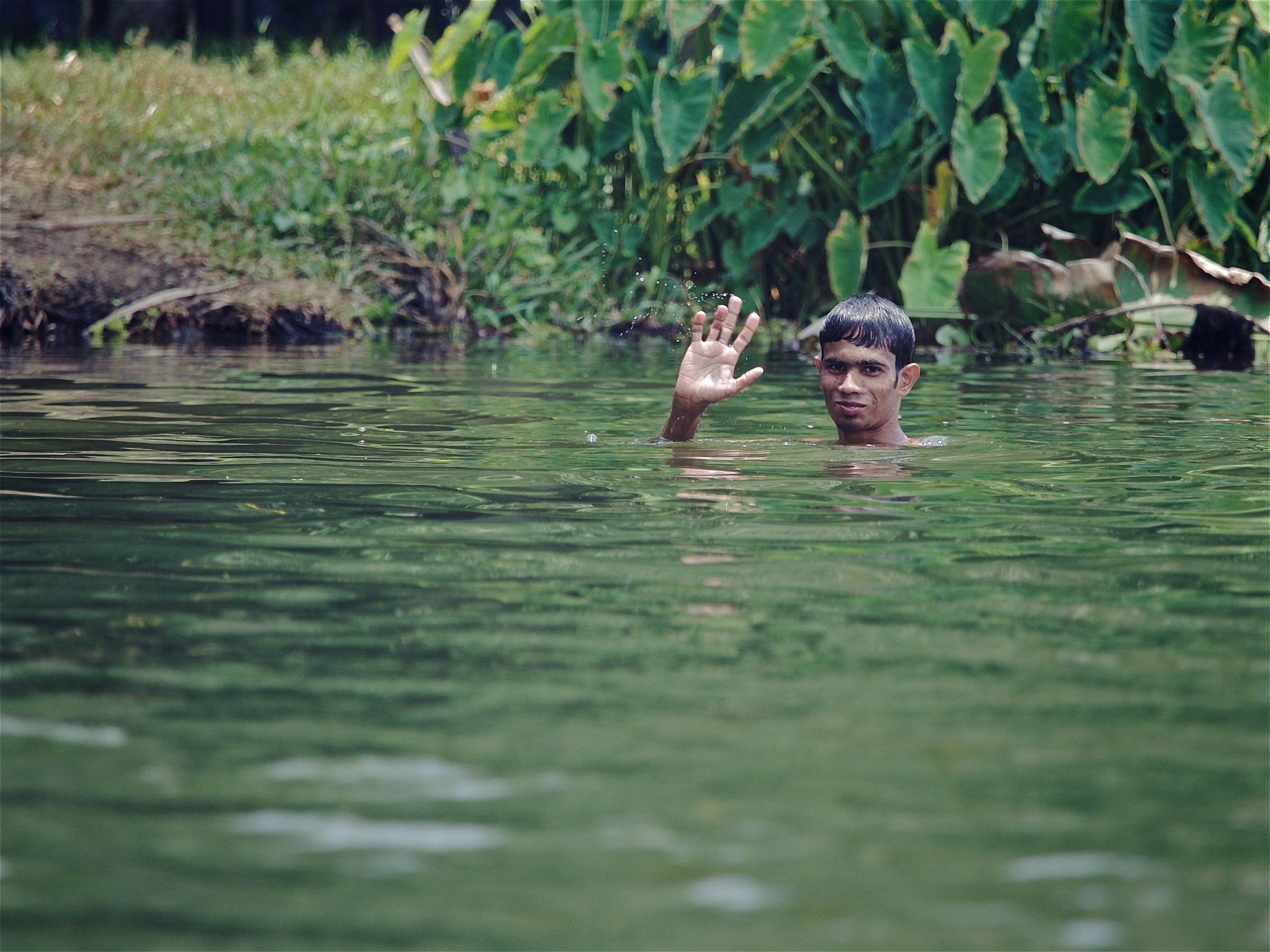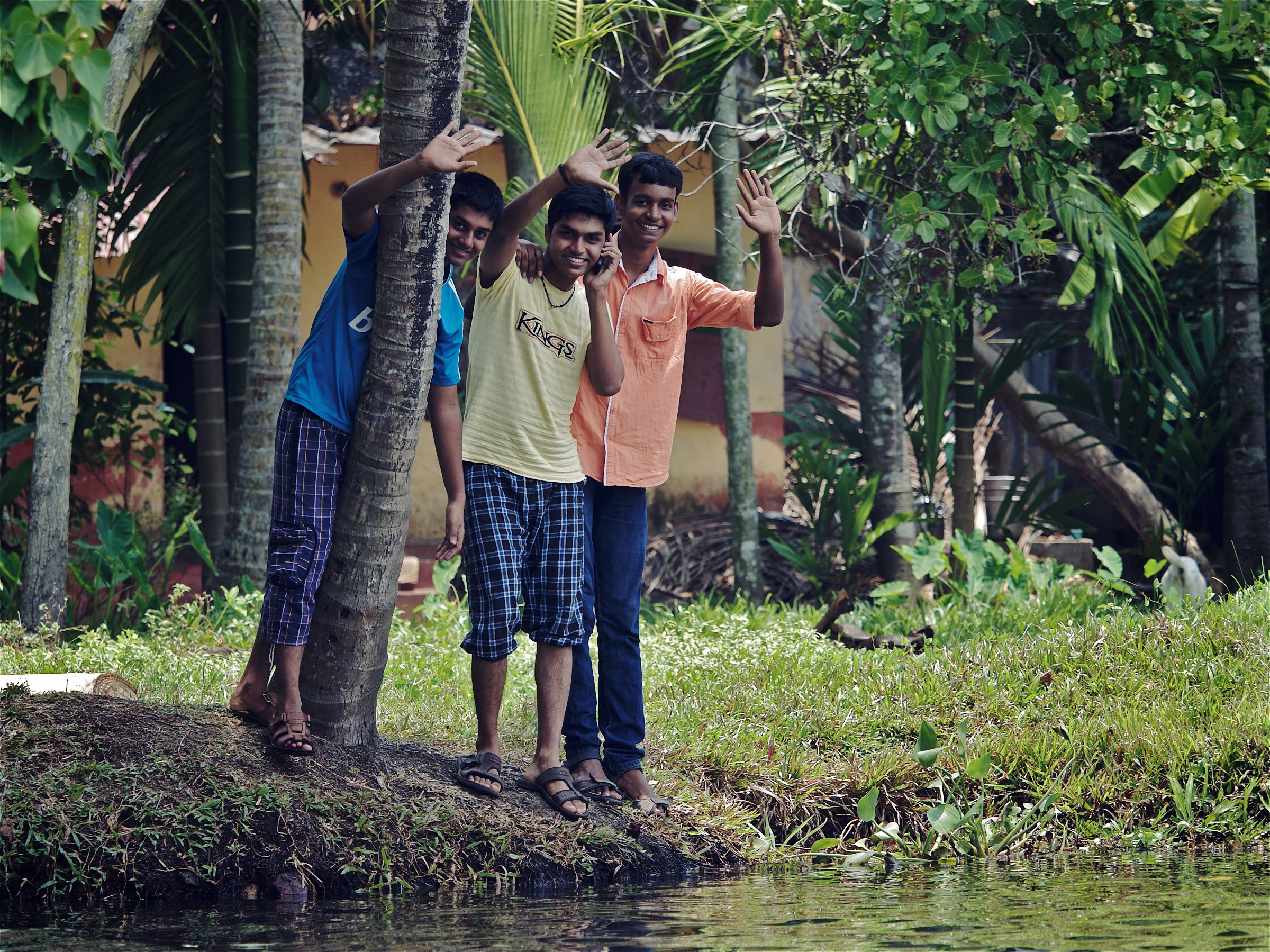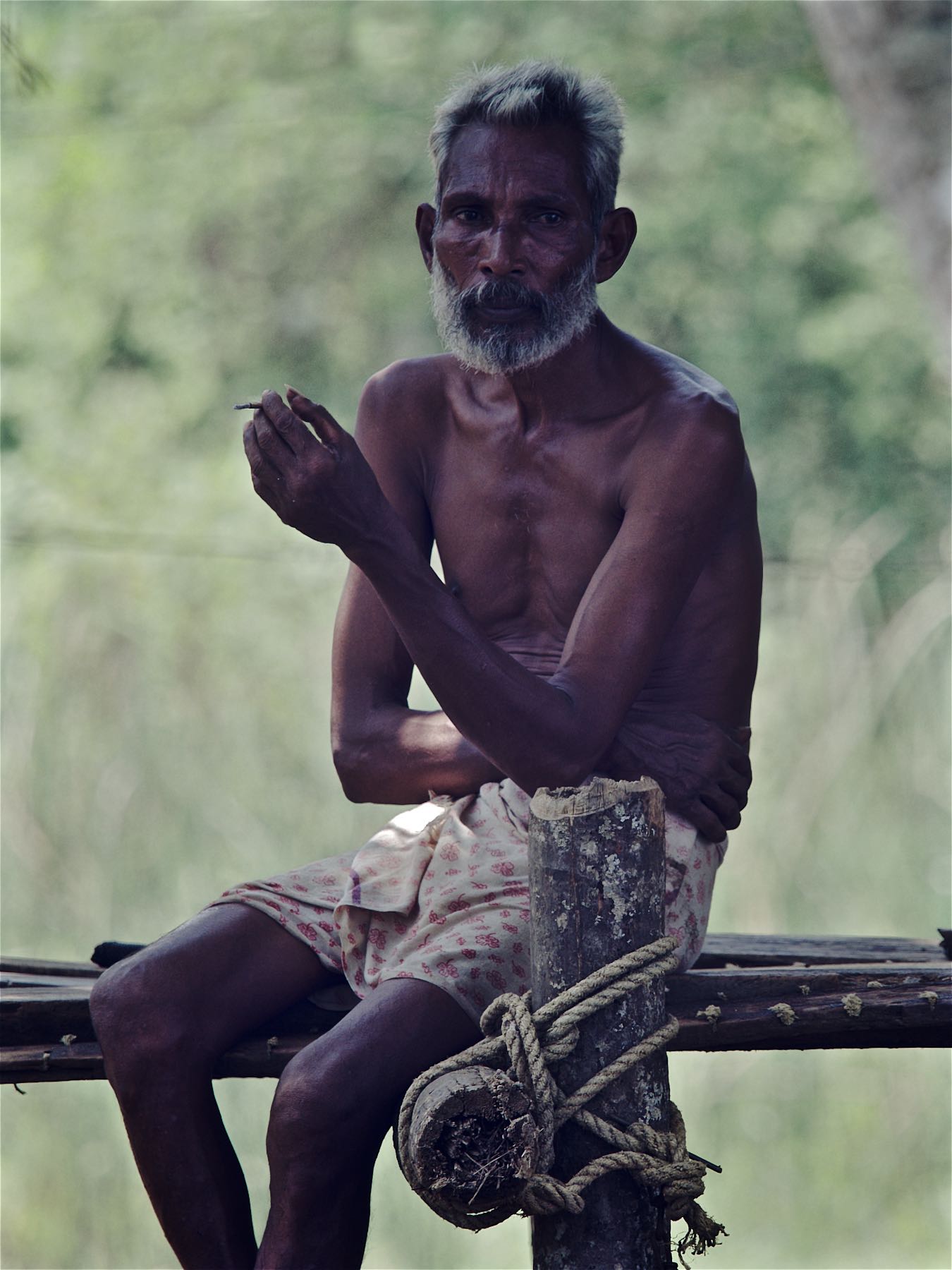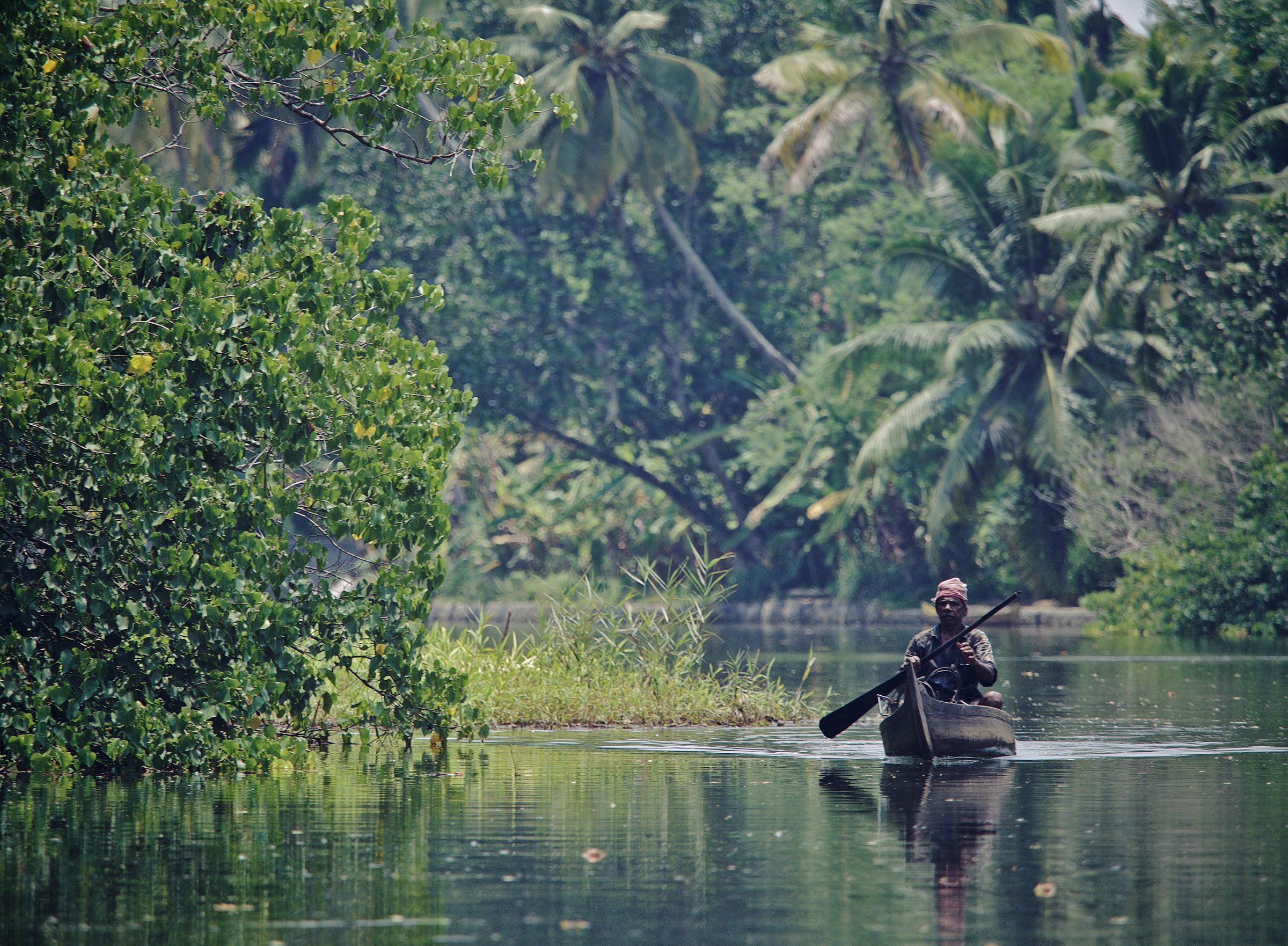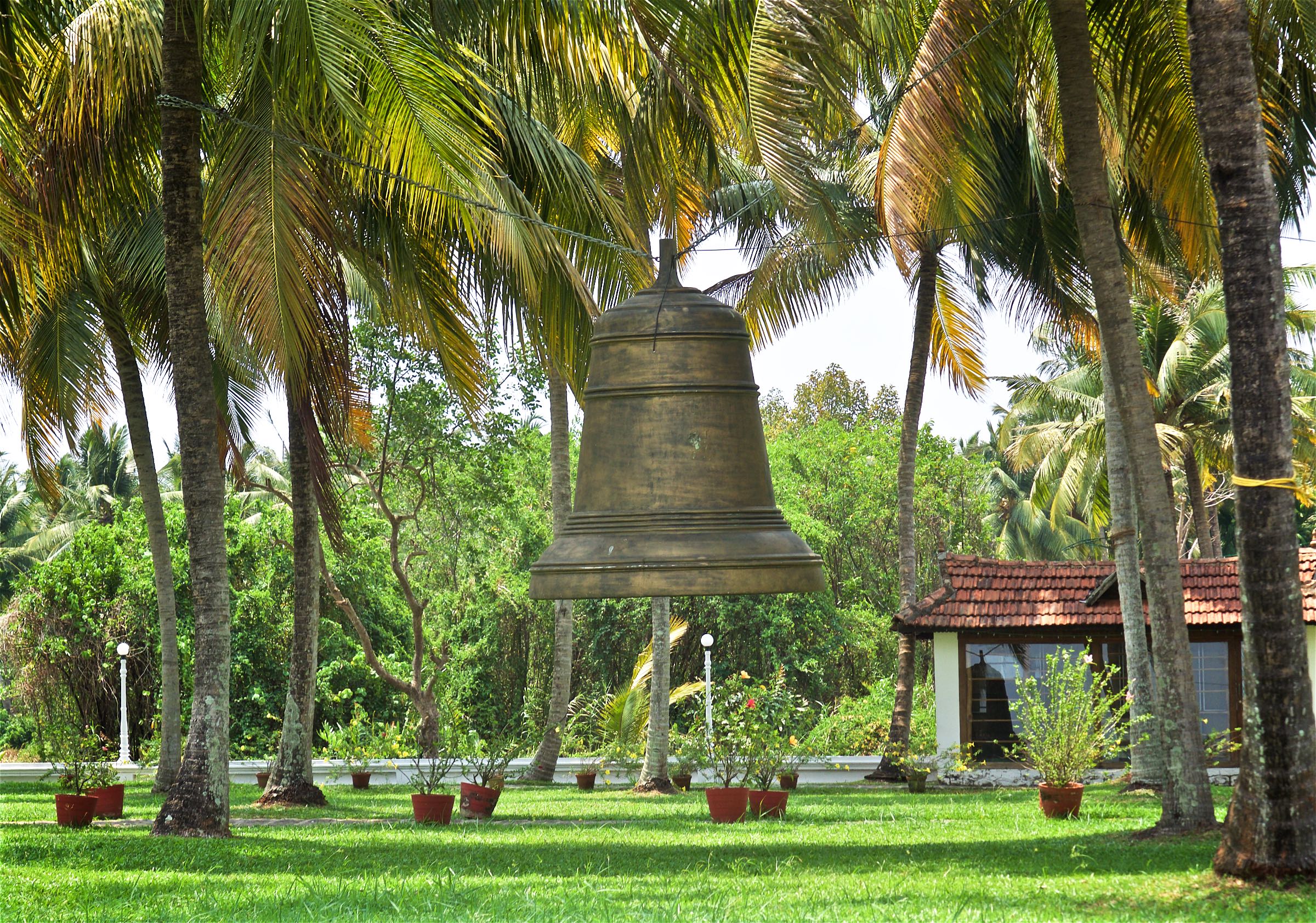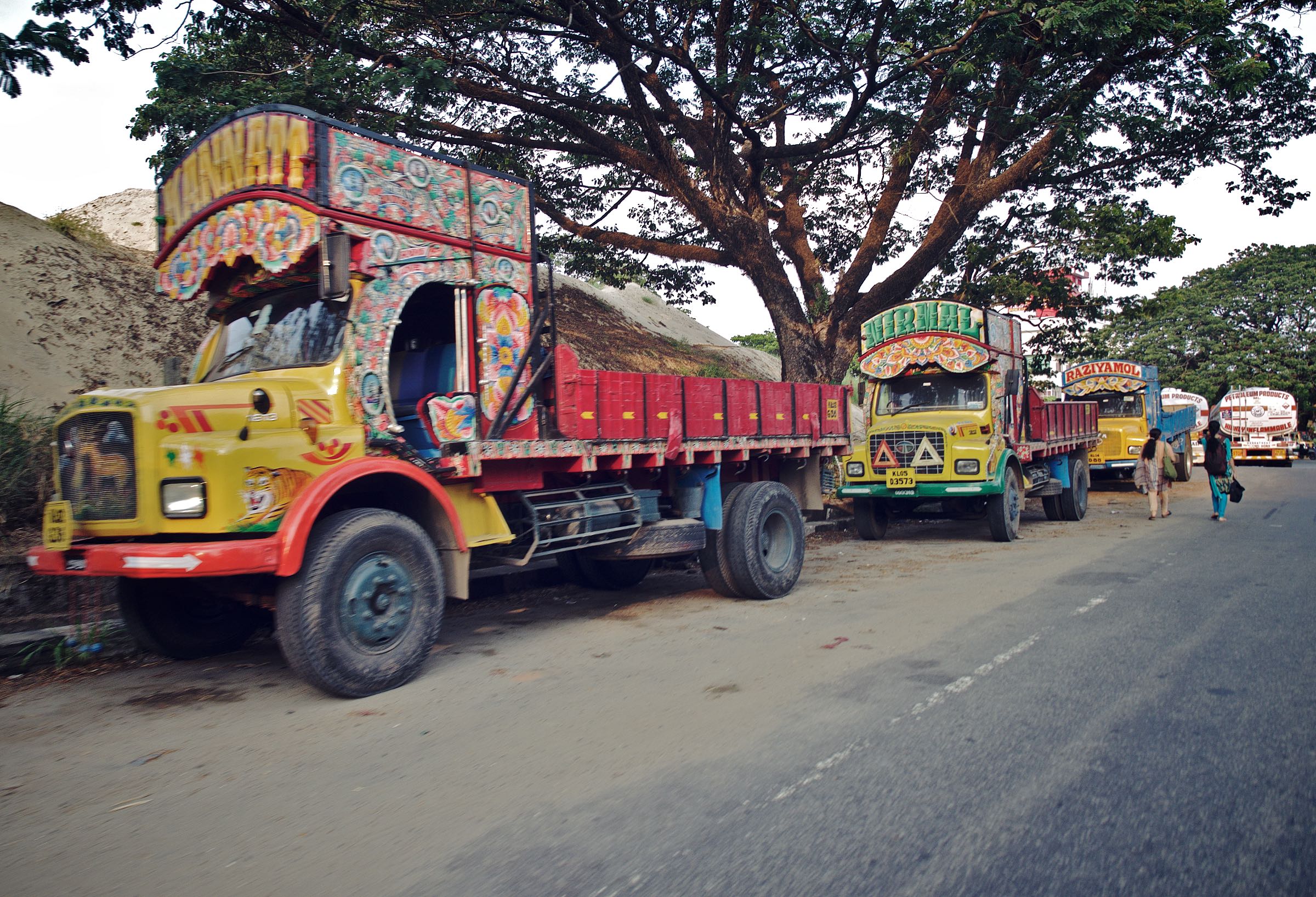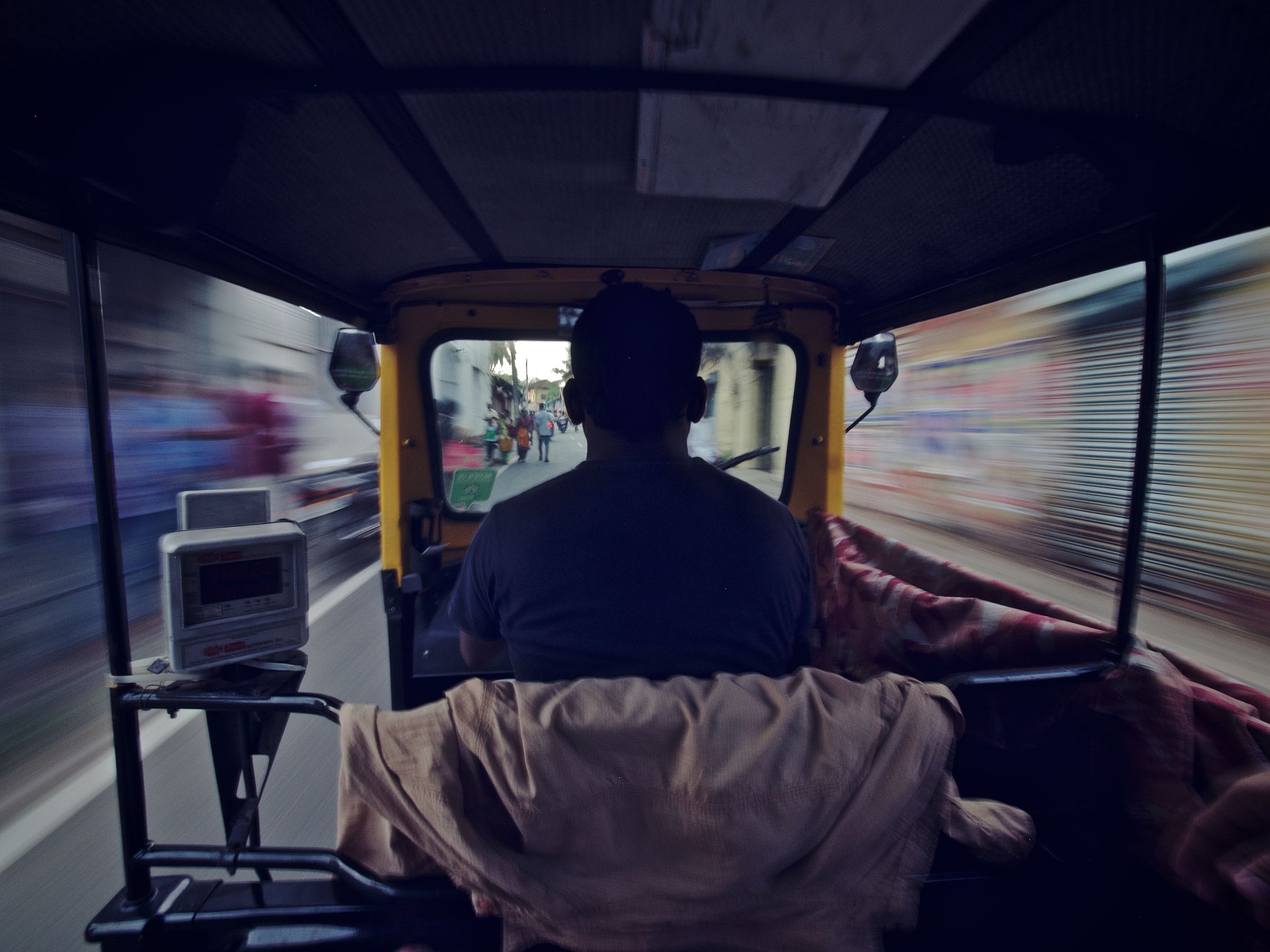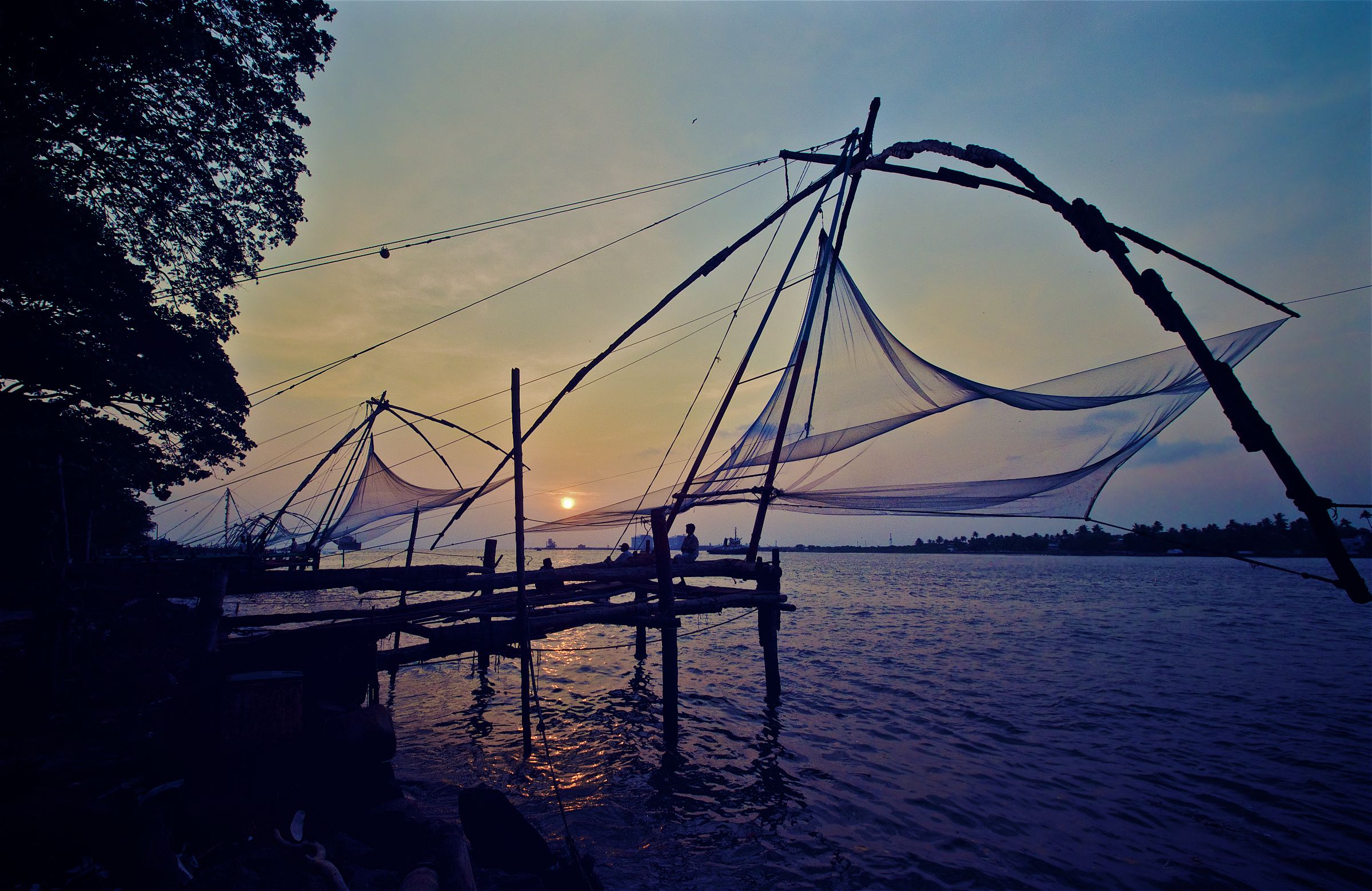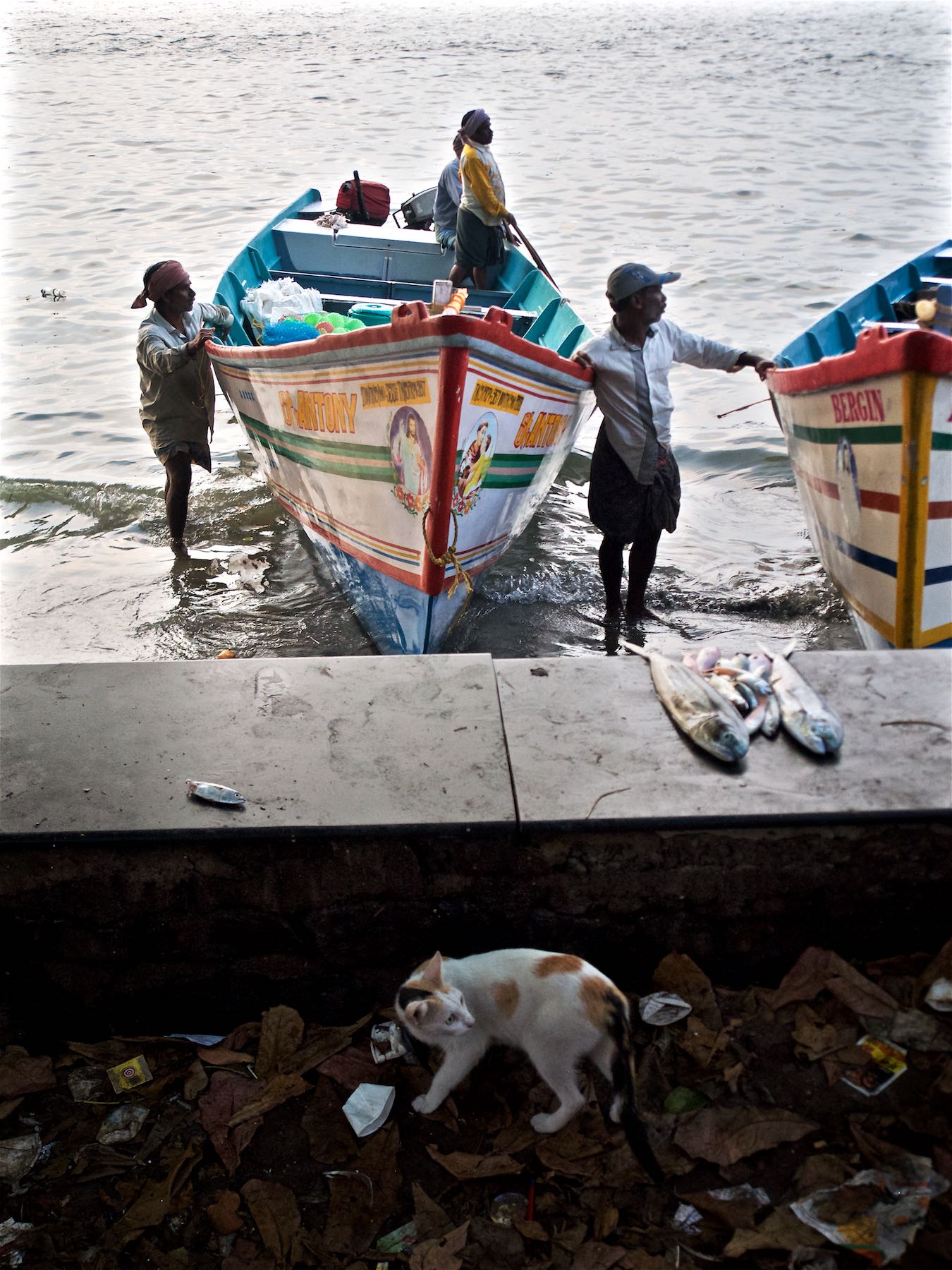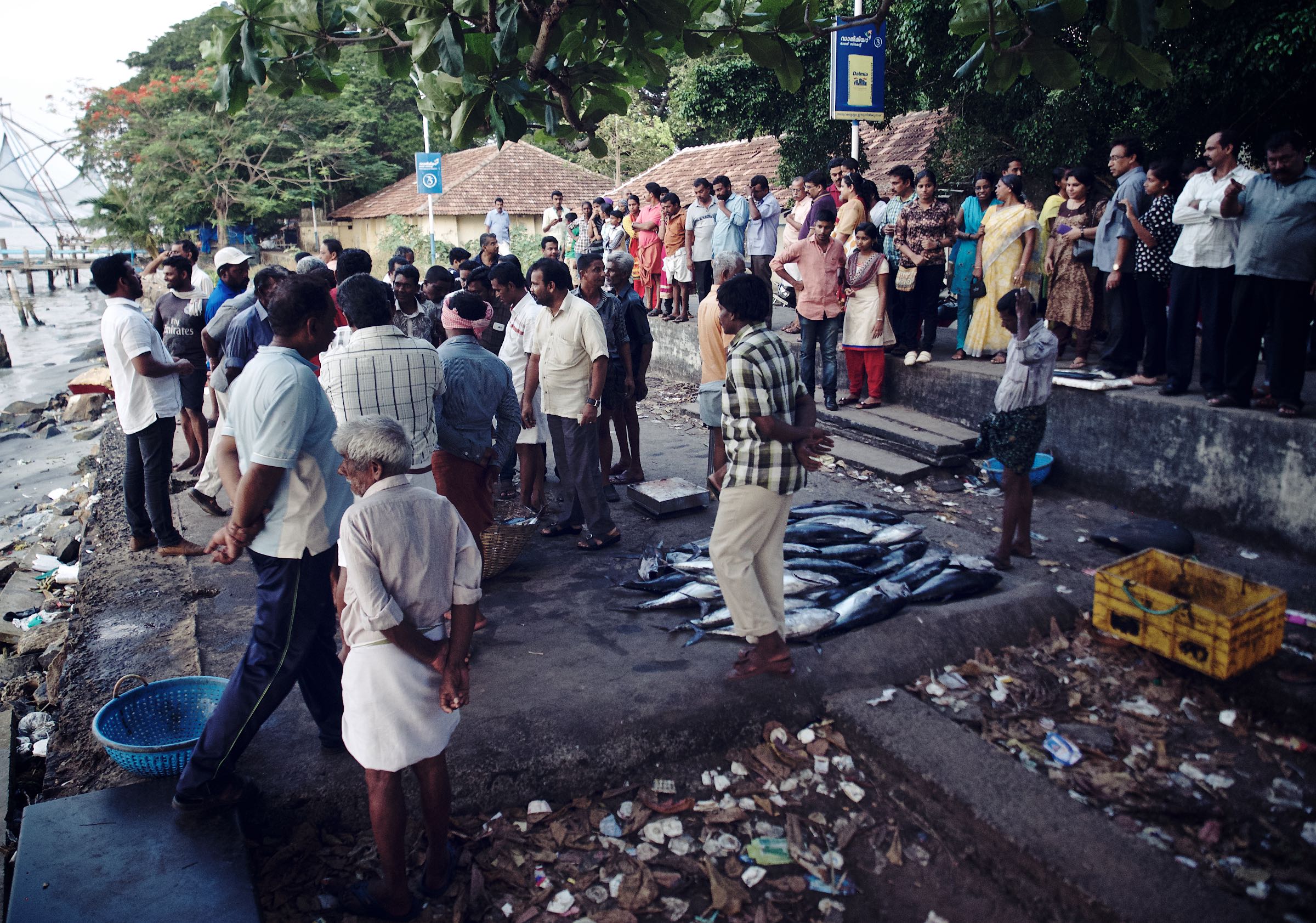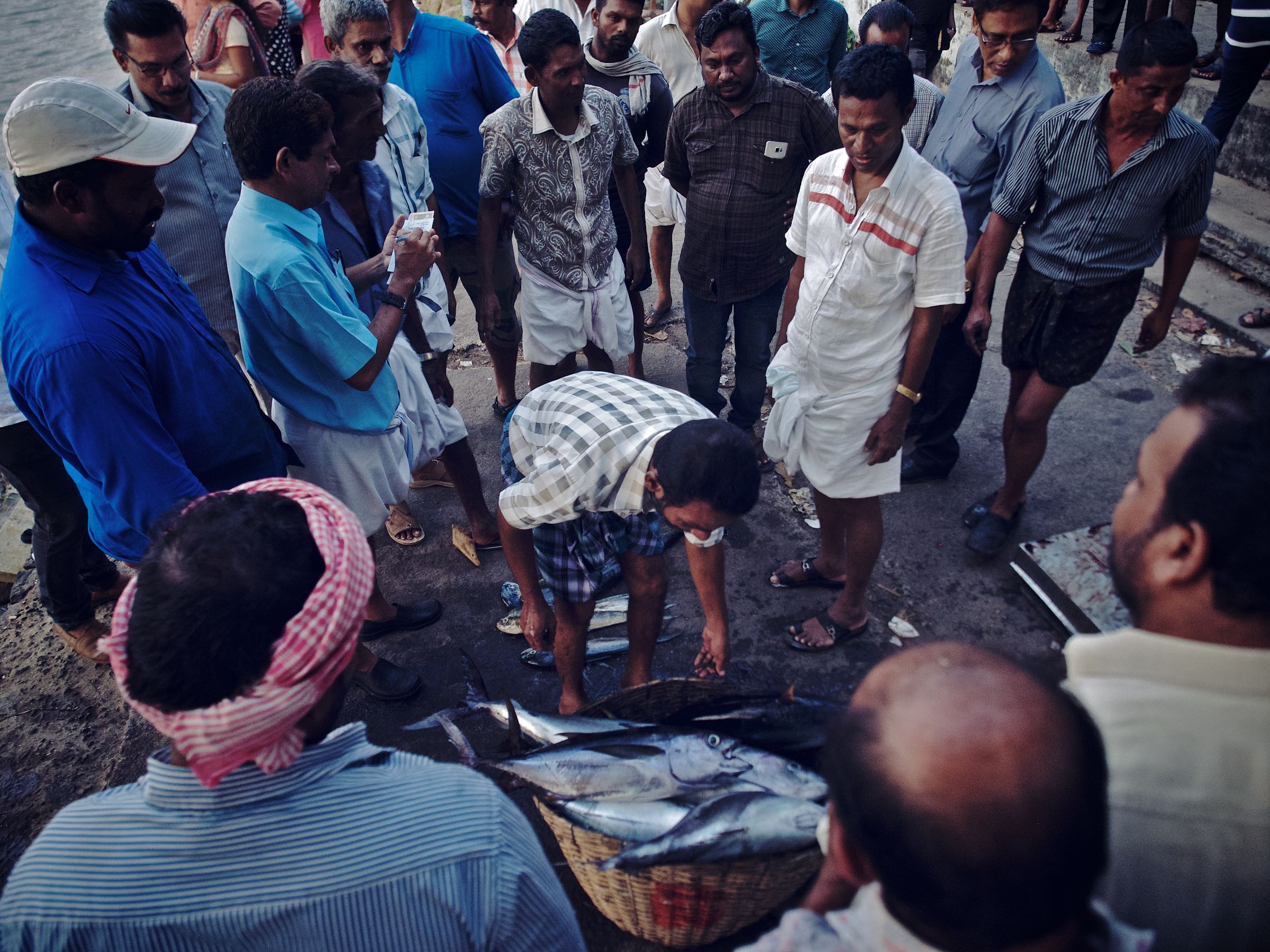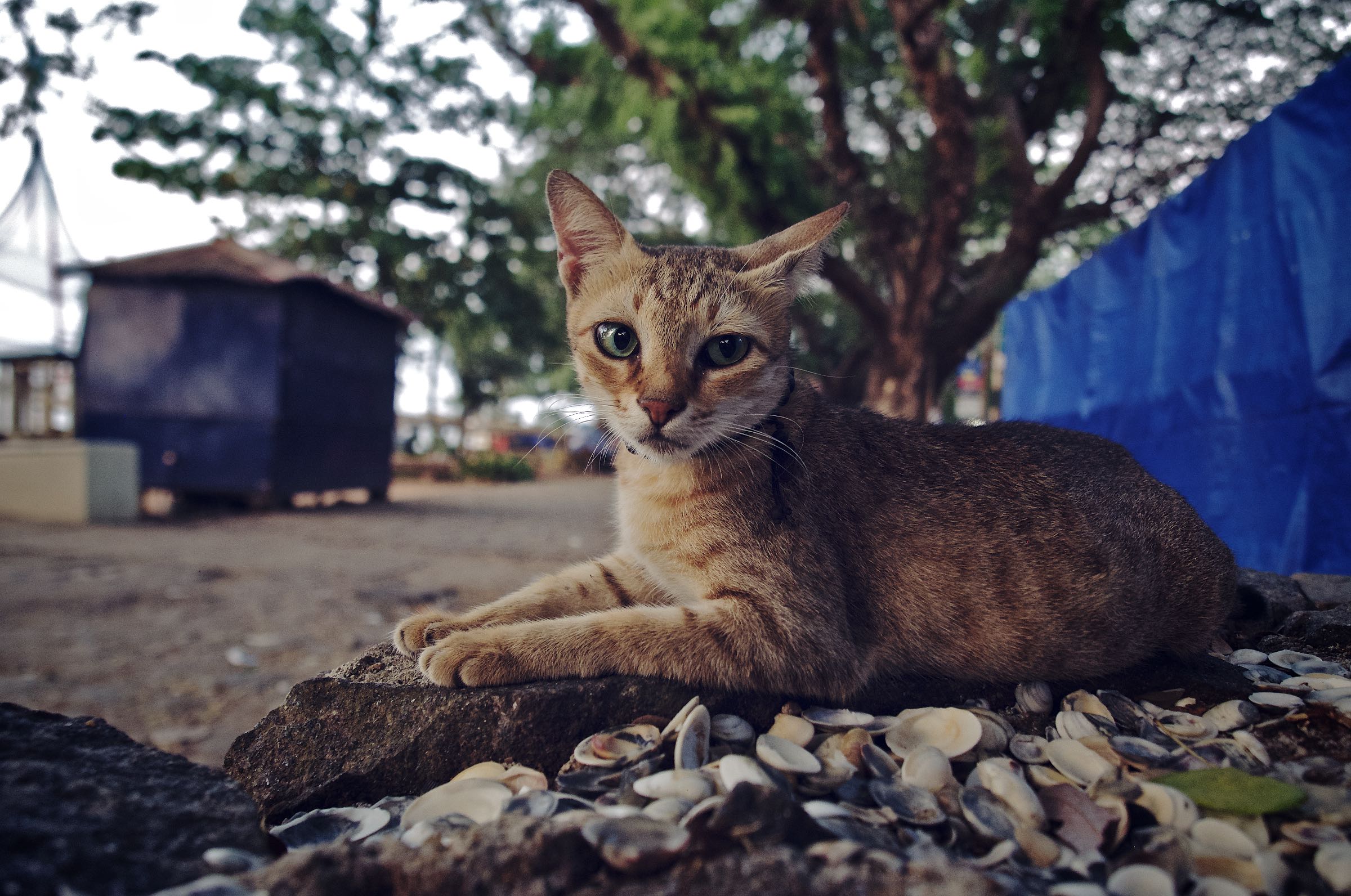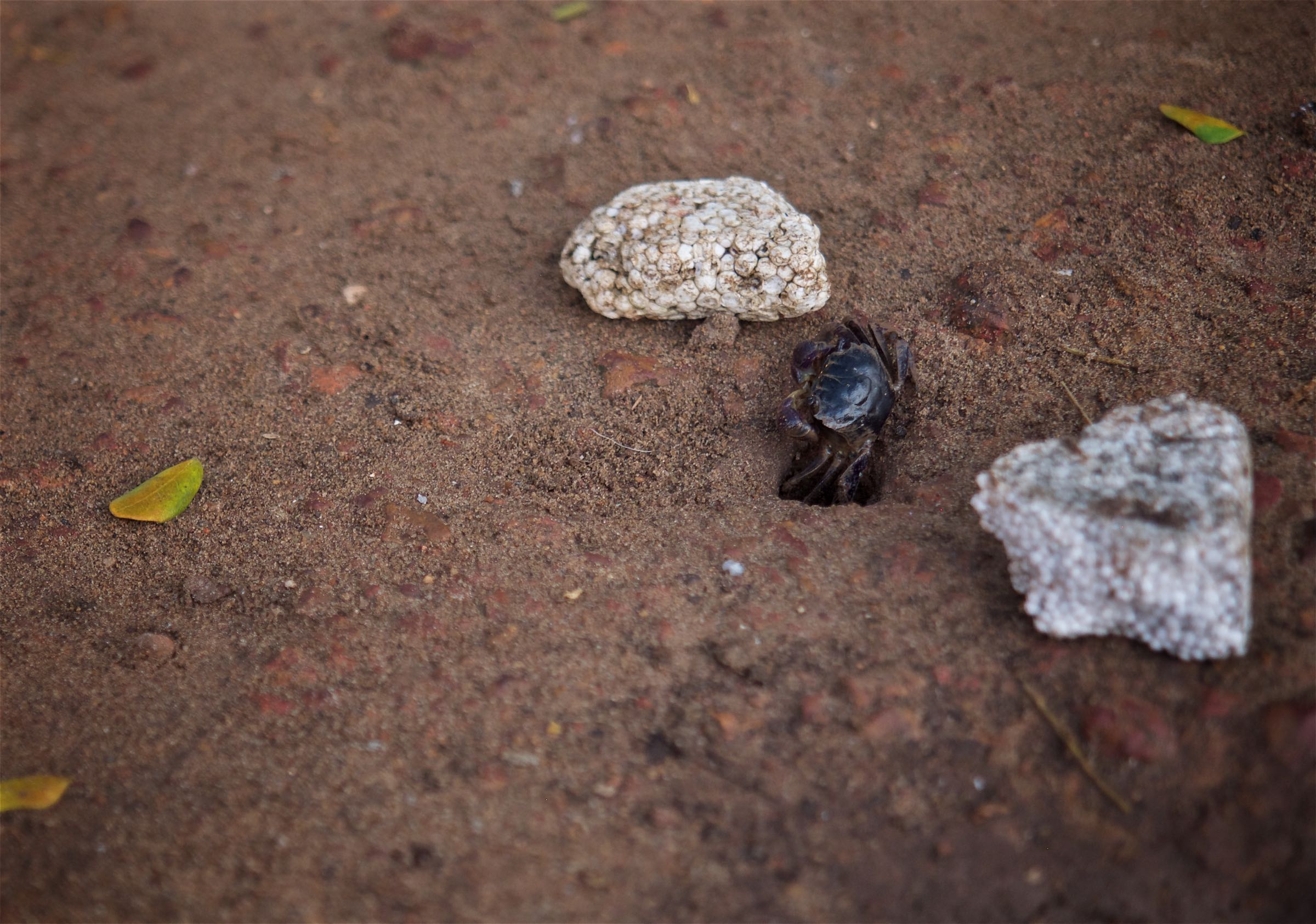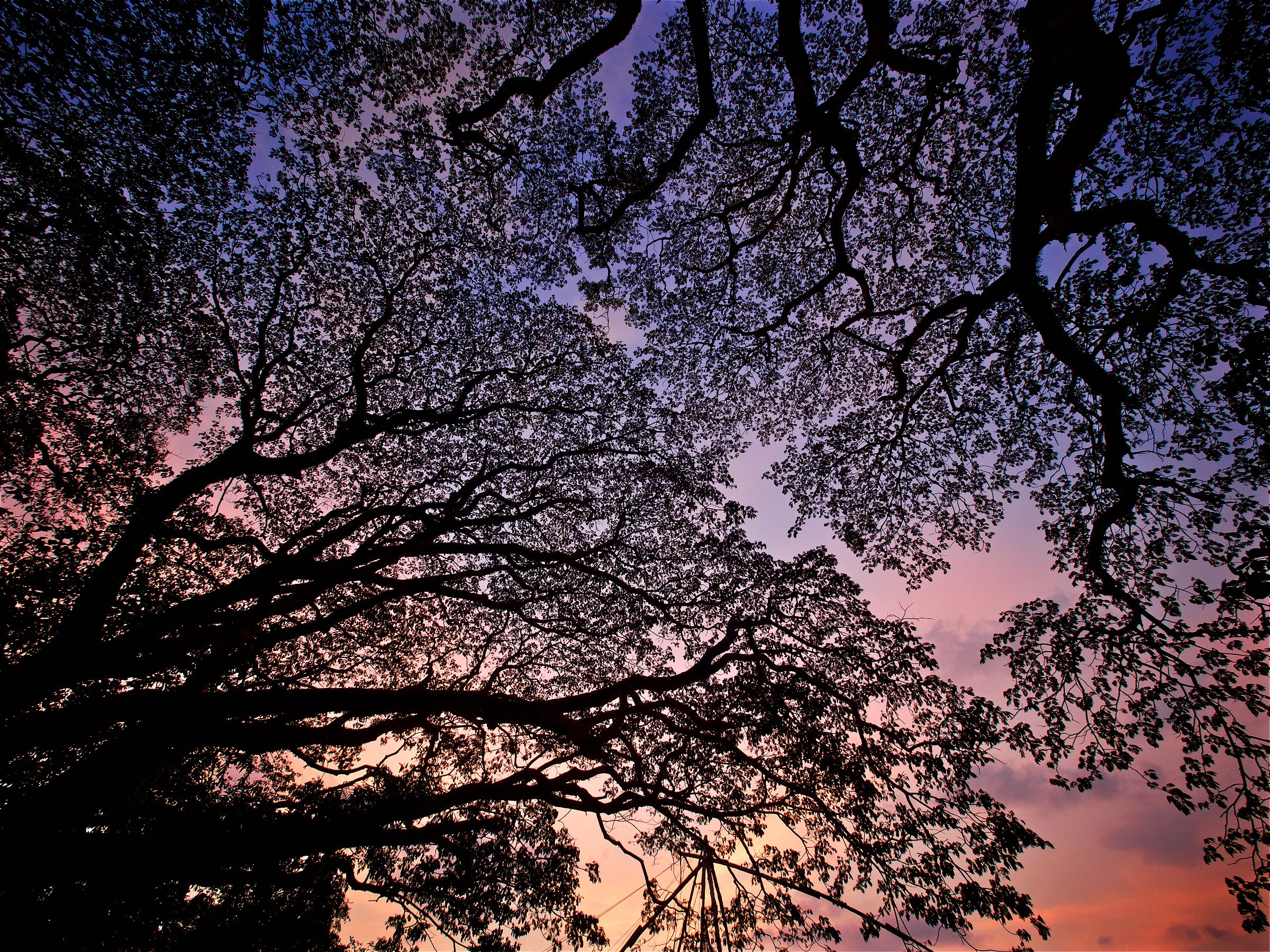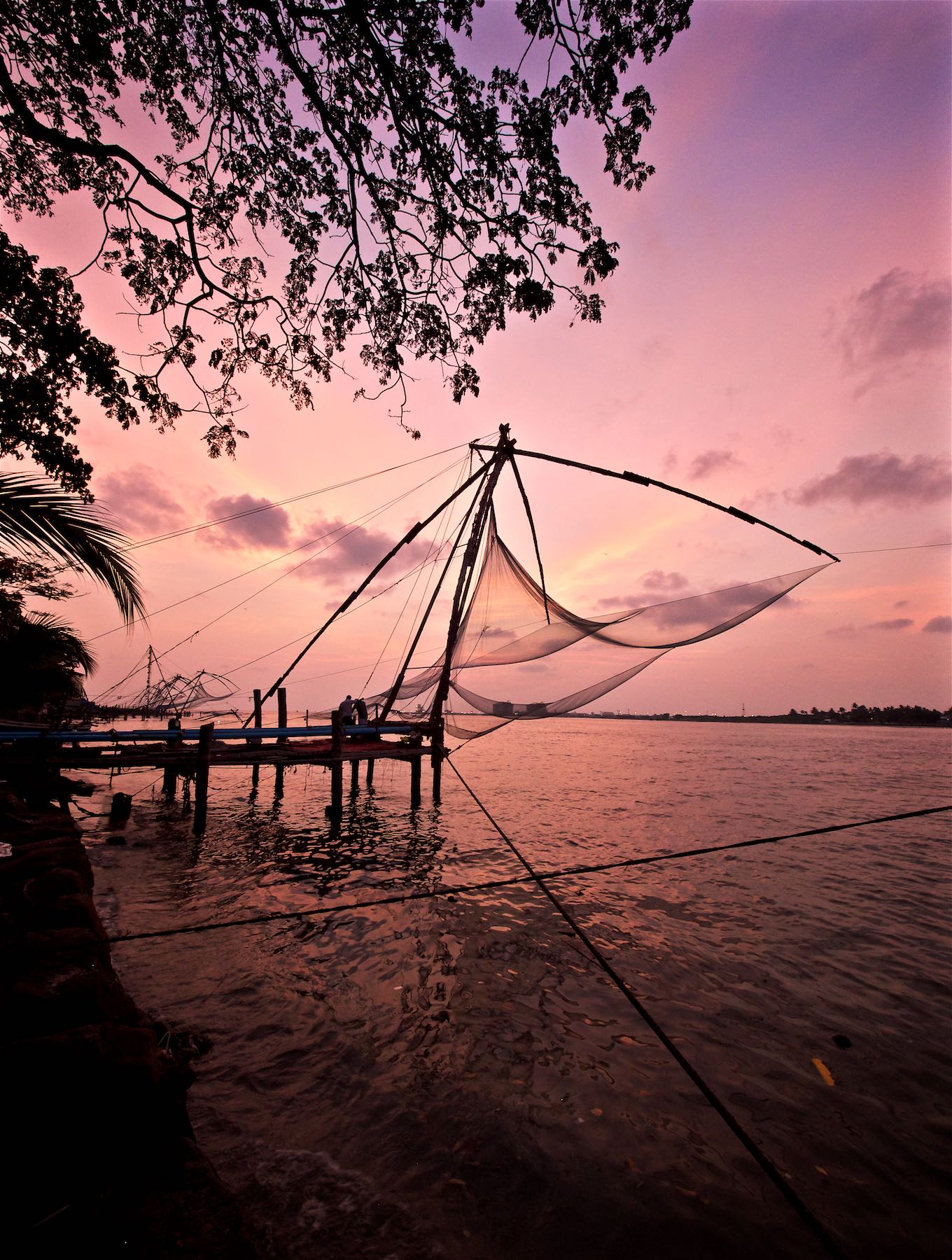Tigers & The Pink City
Completing the golden triangle of northern India with this post covering Ranthambore National Park and Jaipur.
It’s my last (for now) blog post from India after my quest for snow leopards in Ladakh and now completing the infamous “Golden Triangle” journey in the north of the country: Delhi and its many architectural highlights, Agra with the incredible Taj Mahal, and finally Jaipur, the so-called Pink City, which I combined with a visit to Ranthambore National Park and the Chand Baori stepwell.
Ranthambore
Heading south-west from Agra, it’s just a few hours drive to one of India’s most famous national parks. Its claim to fame? The large population of Bengal Tigers, with around 80 of the vulnerable cats hidden somewhere behind one of the entrance gates into the various sections of the jungle landscape.
Having said that, the park is home to a lot more than tigers, its animal population also includes leopards, sloth bears, deer, hyena, and crocodiles for example, plus hundreds of bird species and of course a large variety of flora.
Getting a glimpse of most of the mammal species here is a difficult task, although I caught the back of a sloth bear for a few seconds, which was considered to be quite a rare occurrence. Having said that, my focus was on finding tigers, which also proved to be rather difficult (or maybe I was just unlucky).
Safari’s here are quite different than in most of Africa, and arguably worse in a few ways. The park is divided into zones with somewhat differing terrain and likelihood for sightings, and assignment is by lottery or “influence”. Timings for entering and exit are strict and you need to be back at the gate by sunset, meaning you rush back at least 30 minutes from deep inside the park. That’s obviously when the light starts to get good, and more crucially, when tigers wake up from their afternoon nap in the bushes… Capacity is limited - which is a good thing - but most of the tours are in a big bus with dozen of people, who are often not so acquainted with expected behavior in a natural environment in search for elusive animals. Luckily there is the possibility to book a private small jeep, which I’d 100% recommend.
Other than that, the park features beautiful landscapes, and quite interestingly, a fort with several of its associated remnants scattered throughout - and some alligator decoration.
Rantambhore Fort
The fort is undoubtedly worth a visit, ideally straight after your morning safari - it’s literally in the middle of the park. Together with the many hillside forts of Rajasthan, it’s a UNESCO World Heritage Site, and its origin goes back over 1000 years.
It is home to several temples of the era, and a long winding path brings you to the nearby market area of the village located at the edge of the park, where the monkeys wait to steal food.
Some of the people I met while exploring, which were happy to be photographed.
Padam Talao lake with the hunting palace used by the royal family of Jaipur in the past. It’s also home to the second largest Banyan Tree in India, just behind, with the fort on the hill in the distance.
Back to Tiger Search
It was my last game drive after 3 full days, and I still had not seen a Tiger - even my guide was getting nervous… so we didn’t spend much time at the fort or looking at or for other animals anymore.
Signs
We saw the evidence, such as the scratches on this tree, but had yet to find the culprits, despite the high tiger density in the park. I attributed this to the timings of the game drives when tigers sleep, and the fact the portion of the park allocated for each tour are sometimes quite small, with more or less random drives back and forth in the hope to find one.
The lucky moment happened at the very end when we spotted this Tiger sleeping in the very distance. This was shot at 600mm, and after he didn’t move for 20 minutes it was time to leave…
We got lucky a second time though, on the way to the park entrance we spotted two more Safari cars racing to a location by a small river, where a 6-year old Tigress called Shakir (T111) rested in a much better spot.
Bengal tigers are among the largest cats in the world, with males growing up to 3 meters in length with a 1 meter shoulder height, and a weight that can reach in excess of 250 kg. There are only around 4000 Bengal tigers left in the wild, and more than half live in India.
🐅
Even though I’d have wished for a little more interesting behaviors, she did raise her head once for this photo before we had to rush to the entrance to avoid missing closing time, which seemingly comes with a big fine. Maybe the fastest off-road drive I’ve been through, with a few moments of airtime.
I might come back to see more of this magnificent species, but would probably pick a different park this time. Although the rules are seemingly similar all around, I heard there are some options to improve the experience…
Chand Baori Stepwell
With a small detour to the north you can visit this incredible stepwell on the way from Ranthambore to Jaipur. It reaches almost 30 meters in the ground, making it one of the oldest surviving and deepest in the country. Its construction was finished more than 1100 years ago, albeit with several modifications and restoration projects since.
These types of wells played a major role on the Indian subcontinent from the 9th century onwards, but some are even older. They were often used to ensure access to water during draughts, but also served as resting place and sometimes had broader cultural and religious significance.
The well is famous for its cascading steps that reach down in a diamond-like pattern, and the beautiful arches around the perimeter. This arcade also houses many carved stones and other leftover sculptures from a nearby temple that was destroyed during the course of history in the area.
The Pink City
Jaipur, the capital of Rajasthan, was my final destination of this India trip, and I had two days to explore the city and its surroundings, starting with the Amber fort located in a town on the outskirts.
Amber Fort
The fort lies by Maota Lake, seen here with the historic Saffron Garden and the defense wall running along the mountain ridge in the background.
Although it is an example of Rajput architecture, it also features Mughal elements, particularly the Sheesh Mahal and its garden seen on the right. On the left is Ghanesh Gate with its latticed windows on the top, through which ladies could observe festivals or other activities on the courtyard below in a concealed fashion.
It was primarily constructed from red sandstone and marble and part of the same UNESCO entry as the Ranthambore fort, together with four more forts in the region.
Unmaintained
One of the decaying structures surrounding the accessible part of the fort.
I also spotted this man playing a beautiful local instrument here, the name of which I sadly forgot - if you know, leave a comment.
The other side of the fort overlooks the town of Amer with some of its beautiful Hindu temples and their ornate architectural elements.
Stairwell Symmetry
In this village to the foot of the fort lies another stepwell called Panna Meena ka Kund built in the 16th century, again featuring beautiful stairway patterns - unfortunately not allowed to be walked on nowadays.
Back towards the city lies the man-made Man Sagar lake, created as a reservoir in the late 16th century, featuring a rather interesting structure in the middle - the Jal Mahal.
The so-called “Water Temple” was originally a Rajput style hunting lodge for the royal family, and actually houses up to four more stories underneath the water level. These were submerged over time as the water level rose. Today, it’s unfortunately inaccessible, but the lake is home to a variety of birdlife, and sadly, like many of India’s inshore waters, too much trash - having said that, a restoration project for the ecosystem and also the palace has been ongoing for several years.
At night the structure is beautifully lit up, almost creating the impression it is still in use today, particularly with the beautiful trees in the central courtyard.
Hawa Mahal
Despite the appeal of the Amber fort and the Jal Mahal, it’s probably this building that holds the “most well-known” title in Jaipur. This beautiful facade is part of the palace of the city, and was built in 1799.
The lattice facade once again served the purpose of allowing women to observe street life without being noticed themselves. In fact, the structure is the back (not the front!) of the women's chambers of the palace, and has a rather narrow side profile: some parts are just deep enough to allow a person to stand at the window.
Its nickname “Palace of the Wind” derives from the cooling Venturi effect created by its architectural features. Just like much of the other buildings in the city centre, it was built using the characteristic red and pink sandstone.
Speaking of which, here are a few more impressions from the same road running through the city all the way to the Sanganeri Gate in the south.
Local vendors preparing and selling traditional Chai or Kahwa tea, as well as the snake charmers can be found here. The latter is banned in India because of the associated animal abuse (the snake’s teeth are often removed).
If you keep driving down the same road, you will end up at Patrika Gate, but not before stopping at the Albert Hall museum, built and opened in the late 19th century and housing mainly artifacts from India’s past - I didn't visit the inside though.
Patrika Gate
This gate was built in 2016 by the eponymous newspaper group and serves as an entrance to Jawahar Circle Garden.
It’s the photogenic interior with painted walls and wooden doors that made it popular. Although some people say it’s not worth visiting - maybe because it’s seen as “commercial” rather than “historic” and because it’s located almost 30 minutes from the city centre - I thought it was quite beautiful. Especially so if you manage to visit at a quiet time with no people; I only encountered a couple taking pictures, which kindly gave me the opportunity to add a model to my own photo.
Back in the city, the last spot to visit was the 18th century city palace of Maharaja Sawai Jai Singh II. On the way there though we stopped at an interesting place just outside the palace - in fact, another UNESCO World Heritage Site - which I was not aware of: the Jaipur Jantar Mantar. A collection of huge stone-made astronomical instruments meant to be used with the naked eye, built along four other such locations around the region.
☀️
This is the world’s largest stone sun dial, and can be used with an accuracy of about 20 seconds by a skilled observer.
Most of the 19 instruments were designed to measure and predict movement of planets and calendar events.
City Palace
Having spent way more time than planned at the astronomical instruments (so cool!) the city palace visit was shortened a bit, but here is the Chandra Mahal, the royal residence until today. The family owns vast properties, runs a business empire and still has political influence.
Other than that it features interesting galleries of textiles, armors, and even a clock tower. One of the most distinct features are the beautiful gates at the inner courtyard seen below.
Works of Art
There is also an amazing painting and photography gallery, where I bought a few small pieces so delicate they are drawn by brushes of single hairs of squirrels, using natural colors. This artist has been working for the royal family for seven generations.
Dera Amer
My last stop in Jaipur was this refugee camp for elephants that in the past carried people up to the fort, damaging their feet on the hard stone, and their backs from the weight in the process. The heavy jewelry also cut into their ears and necks, leaving visible marks.
Today, two such elephants are housed here, living a quiet life with their mahout (caretaker) and a few other animals, getting fed by visitors to the camp set up by the Singh family, which partly finances the operation. Many other elephants still suffer from these practices, but it takes a lot of money to purchase them from their owners and then care for them during a long lifespan. It’s sad to see, as I’ve grown very fond of elephants, partly after my trip to Amboseli - they are incredibly gentle and intelligent animals.
And that was it from this trip to India - certainly not my last visit to this amazing diverse country. Lots more to explore.
Subscribe to my newsletter to get notified and don’t miss out on more Wonders of the Globe.
Other Recent Posts:
Delhi & Agra - Home to India’s capital, and its most visited sight
Exploring the north of India and its incredible Mughal architecture.
Following my amazing time looking for snow leopards in Ladakh I wanted to explore more of “typical” India - if there is such a thing - having only been to Kerala in the southwest previously. The capital was as good a place to start as any, before completing the northern trifecta with Agra and Jaipur, as well as Ranthambore national park. The latter two will be part of another blog in the future though.
India’s Capital Region
I barely had two days to spend here, and the first lesson to learn was that New Delhi - the capital city and home to all three of India’s branches of government - is distinct from the larger National Capital Territory of Delhi with its population of 35 million people, covering only a small portion in the centre. I started my first afternoon here, with a sight that is neither related to its political nor economic status: The Agrasen Ki Baoli.
Facing the skyscrapers around the Connaught place area - New Delhi’s CBD - this three level stepwell with 104 stairs is one of the last in the region, and was probably built during the 14th century, although its origins are not fully documented. It has been used by several Bollywood movies and TV series for filming, and as such has become a popular spot for visitors.
The Governmental District
Onwards to the Secretariat building, housing most of India’s important ministries and flanking the Rashtrapati Bhavan presidential palace. Like many of the structures in this area it follows a kind of Neo-Mughal architecture, commonly used by the British architects in the late 19th century.
India Gate
The memorial for India’s fallen soldiers from WW1 seen from Vijay Chowk Park. There are a few more interesting sights in New Delhi, such as Mahatma Gandhi’s resting place, but I didn’t stay longer as the area was heavily closed off and it was a smoggy day due to Delhi’s notorious air pollution.
I moved on to Lodi Gardens for a quiet sunset instead. With its mosques, tombs, and bridges, the park is full of architectural beauty from the 15th century and at the same time serves as a popular recreational spot.
Humayun’s Tomb
Speaking of beautiful architecture from this period, the morning spent at Humayun’s Tomb was probably a favorite moment during my time in India. A beautiful soft sunrise, very very few people, and one of the most beautiful buildings and gardens shaping future Mughal architecture - what more to ask for?
Diagonal View
The building was one of the first to use its unique combination of red sandstone and white marble.
Interior
The symmetrical ground plan of the interior chambers with an octagonal layout seems sparse today, but was richly decorated during the past. The intricate lattice screens still make for impressive morning light patterns on the marble floors. Over 100 hundred graves are spread over the many chambers in the complex, giving it the nickname “Dormitory of the Mughals”. They ruled most of the Indian subcontinent from the early 16th century until the middle 1800s.
Gardens
The beautiful grounds surrounding the tomb are one of its defining features, with the highly symmetrical layout interspersed with bisecting water channels separating the area into a total of 32 miniature gardens. They were recreated multiple times throughout history, having been used as vegetable gardens during the decline of the Mughals, and later re-done by the British in their own preferred formal style, before being restored closer to their original layout.
Barber's Tomb
The southeastern corner is home to the only other larger structure in the complex, the occupant of which is not known due to the lack of inscriptions. It dates from the late 16h century.
Isa Khan Tomb
This octagonal tomb is situated just next to Humayun’s grounds. Although much smaller, it features equally beautiful distinct ornamentation, and is situated in India’s oldest sunken garden surrounding a tomb, which was only discovered in 2011. The same concept was later used for the Taj Mahal.
The tomb’s beautiful tiled roof details.
Isa Khan was a member of the Pashtun nobles, who fought the Mughals during their early rise. He died at the age of 95.
Sabz Burj
A cyclist passing what is though to contain the earliest surviving painted ceiling for any monument in India, just outside the above sites. Although its original construction date remains unclear, it was probably built in the early 17th century.
From here it was time to head to Old Delhi - yes, that also exists, in addition to New Delhi, the Delhi territory and the Delhi district inside it, although Old Delhi is more of an informal area in the central part of the city. The most significant place I wanted to see here was Jama Masjid, built in the middle of the 17th century by one of the most famous Mughal emperors, Shah Jahan - you’ll read his name a few more times later.
The main parts of the mosque were under renovation, but one of the minarets was open to climb on top, providing some interesting views of the Old Delhi cityscape. So densely built, flying your kite on the roof is the best option - look closely…
Meena Bazaar Street
The eastern side of the mosque with the walls of Delhi’s Red Fort in the background - also built by Shah Jahan, and a UNESCO site.
Preparations for - I think - Eid celebrations were ongoing during my visit, with this tailor preparing long white sheets which were to be used as shades across the mosque’s courtyard from what I understood.
The mosque is surrounded by the markets of Old Delhi - an attraction in and itself.
The Ringmaker
During my walk around the area I came across this vendor melting custom brass jewelry, and found the process quite intriguing. I asked him to make a ring for me and watched the elaborate steps it went through until it fit on my finger. While I insisted on paying him, he was proud of his work and would not take any money. I’m keeping it attached to a chain on my camera bag now.
A new Religion and the Lotus Temple
From Old Dehli’s mosque and markets it was time to head a bit further out towards a more modern spiritual piece, which primarily attracted me for its architecture, but also exposed me to an interesting relatively modern type of faith - the Baháʼí Houses of Worship.
The Baháʼí Faith is a relatively new spiritual movement from the 19th century, aimed at promoting unity and acceptance of all religions - any faith and belief is welcome to be practiced here. Although less than 10 million official followers adhere to its principles, its 14 temples attract visitor numbers far greater than that, primarily owing to their impressive architecture and prominent locations.
The Lotus Temple was financed by the members of the community, like all Baháʼí houses of worships. Its award winning design includes a large garden and is composed of free-standing marble-clad "petals", that surround the 9 entrances - this number is a common requirement across all Baháʼí temple designs.
Qutb Minar
My last destination in Delhi was Qutb Minar, part of the complex of the same name, built by the Ghurids who brought Islam to this region.
The minaret is more than 800 years old and another of India’s UNESCO World Heritage sites.
If you didn’t notice, it’s located on the approach path to Delhi’s international airport.
After several incidents in the last decades, the public is no longer allowed to climb up the 72.5 meters to the top, which make it the tallest minaret in the world built of bricks. The surrounding area is open for visitors though and features a number of tombs and monuments.
The crescent moon setting over Qutb Minar on my last evening in Delhi, before heading to India’s most famous sight.
Towards Agra
A mere three hour drive south-east from Delhi takes you to Agra. Once the capital of the Mughal empire for more than 100 years, it is now the fourth largest city in the state of Uttar Pradesh. Its priced historic buildings from the Mughal period are one of the city’s major attractions today, some of which you will see below.
Taj Mahal
Taj Mahal remains its undisputed highlight for any visitor to India. Almost 8 million people admire its beautiful architecture each year, with 10% or so coming from abroad.
The mausoleum was built almost entirely out of white marble and commissioned by fifth Mughal emperor Shah Jahan as final resting place for his - allegedly favorite - wife, Mumtaz Mahal, who died while giving birth to their 14th child. Its symmetrical layout, use of white marble for the main structure and red sandstone for the surrounding buildings, and the many inlay and semi-precious stone features make it one of the best examples of Mughal Indo-Islamic architecture.
Quiet Moment
A very early morning arrival (at least 30min before opening, which itself is 1 hour before sunrise) with tickets in hand already will give you a few minutes inside before the crowds arrive - from my experience, heading north-west towards the Taj Mahal Mosque instead of spending too much time near the entrance is the best option. As the sun rises from behind, you will get to enjoy this view with no one around.
Sunrise
The sun emerging over one of the smaller domes of the red brick guest house in the distance, with two of the front facing minarets of the mausoleum in the foreground. The minarets are over 40 meters tall and were built slightly tilted, so that in the case of collapse they would not fall onto the central structure.
Construction of the complex included a gateway, guest house, mosque, and walls on three sides, and took over 20 years, using over 20,000 workers and artisans. An interesting tidbit I wasn’t aware of is the design of the garden: It originally was full of vegetation, including many fruit trees, roses and other plants, before the British adapted it towards the more formal (read: boring) lawn style in place today.
The only obvious non-symmetrical part of the entire site is a rather unplanned one. Under the middle dome where Mumtaz Mahal’s cenotaph lies in the centre (and no photos are allowed), her husband’s resting place was later added next to her, breaking the symmetry. Their real sarcophagi lie underneath in a non-accessible basement chamber in the same arrangement.
Decorations
An example of the stone inlay work (the pattern on the top is not painted!) and relief work that cover most of the mausoleum.
In line with Islamic traditions, the majority shows Arabic calligraphy or vegetation and other abstract shapes.
One challenging part of maintaining the structure is discoloration, particularly from air and rain pollution causing the marble to adopt a yellow hue over time. To prevent this, the Indian government set up a zone with stricter emission standards around the site back in 1997. Today, cars can only go up to a certain distance to the entrance before visitors need to walk or take an electric buggy.
Aside from visiting the site itself, the garden on the opposite banks of the river Yamuna provide beautiful perspectives of the complex, often with very few tourists and a glimpse of local life happening on the shores. This photo also shows the huge sandstone platform on which the buildings were constructed.
I spent another sunrise exploring the shores of the river - this time on the western side - for more views of Taj Mahal, and was rewarded with this beautiful calm quiet atmosphere.
Sadly, just a few meters from here one of the small Yamuna tributaries flowing through Agra delivers an unbearable amount of garbage and sewage (and the stench that comes with it) to the shores, which literally stopped me from going any further, both out of disgust and concern for my health.
The Yamuna river itself suffers from heavy pollution due to sewage discharge primarily from Delhi. It is said that up to 800 million liters of largely untreated sewage enter the river each day in a very small stretch where it flows through the city. Cleanup efforts have been partly underway but not yet yielded any significant results - this is a sad sight in many places across the country unfortunately.
While the building is of course heavily visited with a hundreds of tourists arriving even before the site opens, there are quiet moments to be had if you arrive early enough, or spend time exploring the areas around the river for a different viewpoint. The beautiful architecture and incredible handiwork makes a visit (or even two) worthwhile, no doubt. But let’s take a look at what else Agra has to offer…
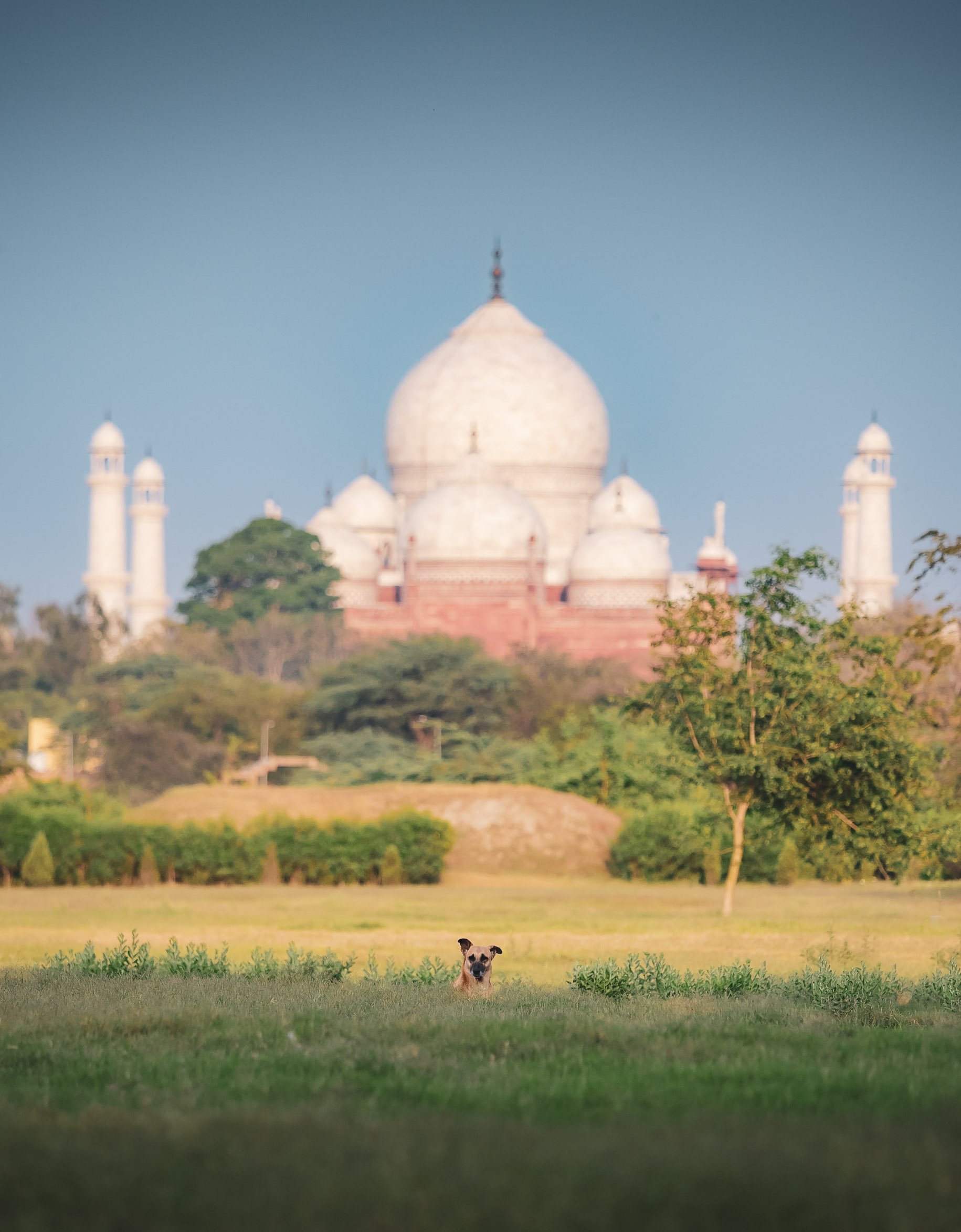
Agra Fort
The walled city of Agra Fort is also a UNESCO sites in the area, Taj Mahal being another, and the final one being Fatehpur Sikri, an incredible red sandstone town outside the city, which I did not visit (for now…)
Started by the Lodi Dynasty just before the arrival of the Mughal’s, the fort changed hands several times until the British arrived the early 19th century.
Prime Spot
The fort’s location on the river Yamuna gives it a prime view of Agra’s most priced sight, making it a popular photo spot.
The interior of the Musamman Burj palace inside the fort with its beautiful marble inlay and lattices. It was built by Shah Jahan for his beloved wife Mumtaz Mahal - ironically he also spent the last years of his life in captivity here, held by his own son who succeeded him as the emperor.
A view of the palace from the west. Shah Jahan is said to have died here while watching the the tomb he built for his wife.
Tomb of I'timād-ud-Daulah
One of my favorite places in Agra was this rather small but beautiful Mughal mausoleum, often regarded as the “Baby Taj”, built by Nur Jahan for her father Mirzā Ghiyās Beg. It was completed in 1628, just a few years before its bigger brother began construction - commissioned by her stepson!
Details
Delicate jali screens of carved white marble as well as typical inlay work combined with painted patterns all over the structure make it feel more delicate and intricate, but less simple, than the Taj Mahal.
The main chamber holding the tombs of Mirza Ghiyas Beg (who was Mumtaz Mahal’s grandfather) and his wife Asmat Beghum.
The Red Taj Mahal?
Another Taj-related building I wanted to see was this one: John Hessing's Tomb. The Dutch worked for the Marathas in Agra at the turn of the 19th-century and was killed in 1803, fighting the British to defend Agra Fort. His wife commissioned the tomb in similar spirit as Shah Jahan had done for his significant other.
The monument is housed in an ancient Catholic cemetery, somehow reflecting the complex multicultural facets of the local society even before the arrival of the British. While its design incorporates common elements of Islamic tomb architecture with some references to the Taj Mahal, it is made of red sand stone and lacks a lot of the decoration.
After a last walk through the markets around my hotel, it was time to head west. That’s for another blog post, but take a look at what is maybe my favorite image of Agra below first - a lucky moment.
Subscribe to my newsletter to get notified and don’t miss out on more Wonders of the Globe.
Other Recent Posts:
The Ghost of the Mountain
In search for one of the most elusive cats on the planet in the mountain ranges of northern India - with some incredible sights.
In March 2023 I finally took a trip I had already planned previously, but our old spiked friend Covid-19 had a different idea at the time. The good thing is that on my next attempt I was able to combine my time in the mountain ranges of Ladakh with a few extra days in other parts of India - more on that in a future blog.
For today’s episode, the focus is on an area of the world’s most populous nation that in some ways is very different than the (already diverse) rest of the country: The union territory of Ladakh in the very north, bordering China and Pakistan, and sitting entirely above 2500m in the Himalayan and Kunlun mountain ranges. Why did I come here? To find the ghost of the mountain…
After a short flight from Delhi, my trip started in Leh, the historic capital of the ancient Kingdom of Ladakh at an elevation of 3500m. I spent two days here to acclimate, highly recommended to avoid altitude sickness before making your way further up into the mountain ranges up to 5000m.
The view over the river valley from our hotel, and the historical sites of Namgyal Tsemo Monastery and Tsemo Castle on the right side.
Influences
Tibetan influences are evident all around in the area, starting with its people (40% buddhist) and the temples. The region has a very distinct culture, which also includes a Ladakhi language spoken by almost half the population of around 300,000.
Leh was once an important trade route along the Indus Valley. Today it has become a tourist destination during the summer months, but the winter time (I visited in March) are generally very quiet.
First Sights
Our time to acclimate was cut short - on the day after arrival, we got a call in the morning that told us some spotters had seen a snow leopard about 1h drive away. When you hear this, you jump and get moving. While Ladakh is one of the best places in the world to see these elusive cats, it is believed they number around 300 at best, in an area of almost 60,000 sqkm - good luck! There’s a snow leopard in the photo on the left, and I guarantee you you’d never see it with your bare eyes alone.
Can you spot it?
Here’s a zoomed version of the panorama above, a small portion almost exactly in the middle. Look closely… hint, it’s lying flat in the lower centre of the photo.
And here’s the answer below. At a focal length of 1200mm, you can finally see this amazing creature sunbathing and yawning after its mid-morning nap. Scroll up again to see if you can make out where it is in the panoramic view from our viewpoint.
Snow leopards are mostly active around dawn and dusk, and exhibit many characteristic behaviors that we observe with the feline friends that live in our houses, such as the typical cleaning poses, scent rubbing, and yawning. They also cannot roar, but have been observed purring at times.
After about 3 hours of napping and cleaning, the snow leopard slowly made its way to the left, transversing the richly coloured mountain ranges, which were already free of snow in early March - that was gonna change a few days later at higher altitudes. If you scroll back up to the first panoramic image of this landscape, you’ll be able to make out where the cat was heading…
In the photos above, you can see the large tail, very thick due to its purpose as fat storage, and covered in a layer of fur, allowing snow leopards to use it as a blanket when asleep. Sleeping wasn’t on this individual’s mind anymore though. It was headed for three urial that has been peacefully eating on the slopes on the left, and was carefully approaching them, taking cover behind rocks and ridges from time to time. This is when we got excited - there was a definitive chance to see a hunt now, something that is almost never observed in the wild.
The Hunt
Things were in place. This photo features both the snow leopard approaching in hunting mode, and two urial, native wild sheep, not yet realizing the danger they are in.
Need some help finding either of the two parties? Take a look at these two images, zoomed in to the bottom left, and right, respectively.
The urial have been making their way down the cliff to feed on grass and bushes that grew between the cracks, while the snow leopard had managed to approach them from above without being seen - the whole process took almost an hour. After another few minutes of deliberation, the cat decided the moment had come and made its way down the slope.
One jump, and the three urial realized what was about to happen and scattered down the slope. For a split second the snow leopard wasn’t sure which one to follow, but once it had made its decision, there was no going back.
At this point, the speed at which everything happened and the athleticism of both animals as they raced down the cliff was completely overwhelming - I thought I was prepared to get the shots I was hoping for, but things happened way faster, in a much wider field of view, and a darker environment than I had anticipated, making my photos mediocre at best. This might be the topic of another blog post or a talk some day, as I learnt quite a few lessons for situations like this, even though I had been photographing a lot of action-packed wildlife before. For those interested in the photographic details, in short, shifting away from continuous autofocus, sticking to a very long focal length at the expense of light, and getting greedy with shutter speed, are all mistakes to avoid.
Dramatic
Here’s an iPhone video of the hunt taken by one of the spotters (and copyright and credit to him) next to me almost from start to finish. It doesn’t do justice to the steepness of this cliff, which was the reason the urial ended up stumbling and falling to its death into the canyon road that passes below (where we drove a few hours earlier).
The hunt ended with the snow leopard killing the urial with a bite at its neck, and the cat dragged the large sheep a few meters back up the cliff.
Pose of Success
This was also the closest we had come to the animal, still at least 500m away I’d say but enough to see the beautiful details of this incredible cat.
Post-Hunt Rest
With the kill a few dozen meters below, the snow leopard retreated under a huge outcrop to rest a bit, observing its surroundings and probably waiting for darkness to creep in before it would go back to eat - we left it alone at this point.
Despite the excitement of having witnessed this incredible sight, for the next days (and even while writing this 9 months later) I couldn’t quite shake the little disappointing voice in the back of my head telling me I had missed some once in a lifetime photos. Once in a lifetime sounds a bit dramatic, you say?
Our main spotter, who worked for the BBC and other wildlife documentaries being filmed in the region, told us he had not once seen a hunt from start to finish in his 15 year career. With this perspective in mind, the fact I got lucky enough to experience it at all started to overshadow the lack of a perfect photo.
Ulley
It’s difficult to deny that we had already witnesses the highlight of the week here as we made our way from Leh further into the mountains on Day 3. The destination was the small village of Ulley, a group of around 10 houses in a valley at over 4000 meters, which offers a cozy small lodge as a home base for people looking to get a glimpse at the ghost of the mountain. On the way, we passed the confluence of the Indus and Zanskar rivers, seen above.
Likir Monastery
Another highlight as we moved along the dirt roads was this monastery built in the 14th century and, according to Buddhist mythology, the first construction by the Tibetan monks.
Historical Evidence
Petroglyps that have been found around the region, such as here in a small collection along the Indus River, are over 5000 years old. Ladakh has been populated since the Neolithic times.
Once we arrived in Ulley, these were the views into the valley we got to enjoy from the observation area at the lodge. The spotters set up their scopes and binoculars here each morning to look for animals roaming on the slopes.
Ghost Spotting
The spotting crew is what makes it possible to see snow leopards - or really any animals at all - in this area. Their experience and skill at observing the surrounding mountain ridges is incredible to observe. Most of the spotters here have been working in this field for over 10 years and often support film crews for wildlife documentaries or researchers. Some of them have installed their own camera traps to help document the animals in the region.
(I believe) a Himalayan vulture and a bearded vulture - one of the various birds we found in this area, alongside snowcocks and partridges.
The Return of Winter
Winter had arrived after a few days, and the valley was suddenly covered in snow and fog. While March signals the end of the very cold season, occasional snowfall happens until April.
Those conditions weren’t the best for spotting animals, but they were even worse for some local workers and their families, who were hired by the government to improve road access to the village. Their tents suffered from the weight of the snow, and heating (using dried cow dung) became essential.
Day to day life was impacted as well - it becomes difficult to dry your laundry when it freezes in the snow instead. During the winter months, there is no running water in the village, and availability of electricity is temporary at best.
A small collection of buddhist chorten, a type of stupa, at the top of the mountain road, serving as depositories for Buddha relics.
400 Years
Is the age of this local house, which we saw while exploring the valley above the lodge on foot. The couple who lives here are the parents of one of the girls working in the lodge, and they kindly invited us for tea. A beautiful way to warm up - it was -15C outside. The cat had to do the same, can you spot it in the photos below?
Seeing the interior of the structure and the many artifacts that have been in use here for centuries was really interesting: Pots that have been passed down generations, skillfully brewed local Kahwa tea, and the traditional wedding belt worn by the couple’s daughter.
Couple in the Snow
I don’t often take portraits, but sometimes moments present themselves where you can capture an unfiltered natural scene. One of my favorite photos from the trip.
Nightfall
The stars rising over the mountain ranges and the weather cleared up.
Exploring
Prayer flags are commonly seen in this area when driving from village to village, as we did the next day. They’re, meant to bless the surrounding countryside and usually come in five colors: blue for the sky, white for air, red for fire, green for water and yellow for earth.
Yak Cow Mix
It’s rare to see wild yaks in the area, but the domestic cow type mix is commonly seen.
On the Lookout
Regular stopping and scanning while traversing the mountain roads along the many cliffs and valleys is the way to see animals here.
Aside from the elusive snow leopards, the mountain ranges of Ladakh are home to other fascinating animals that adapted to the harsh and cold environment, such as the vulnerable Urial, with only 1500 of the Ladakhi subspecies left.
As well as Ibex, such as this female looking for food under a large boulder and the group of males on the right.
Another highlight of Ladakh that is rare to see can be found in the photo above. In fact, there are at least seven of them. Take a close look…🐺 Himalayan wolf are an endangered species generally found above 4000m, with just a few hundred individuals usually moving in packs of a dozen or more individuals. We had the chance to see a distant pack quickly moving along through the rocky landscapes for a few minutes.
A Day of Sightings
As the weather cleared up and the half moon rose over the Himalayan mountain ranges, our second snow leopard sighting for the week happened to occur in the valley of the village, just a very short drive away.
That drive however was followed by a hike through a nearby canyon - which at 4000m elevation with a dropping blood oxygen and a lot of equipment becomes a bit tougher than normally. In the end, this sighting showed us some remains of a previous meal the cat enjoyed, and a very brief distant glimpse of a snow leopard’s head at the ridge after waiting for several hours. That’s a much more common snow leopard expedition sight - can’t always expect a hunt!
Sighting 3
On a late afternoon on the same day we got another call - a snow leopard was sighted not too far from one of the roads through the local villages. Our guides made the call to give up on the lazy cat on the ridge, and go for this one instead. A good decision.
While still relatively far if you are used to African safaris (which are nothing like this), it was probably the closest sighting we had. And what a beautiful individual, with a big furry head, showing us its teeth as well.
Snow leopards are generally solitary, with each individual occupying a home range of over 100 square km with little overlap. There are less than 10,000 estimated to remain in the wild, with almost half of them in China alone. The rest is spread over the mountain regions of Central Asia, from northern Mongolia down to the Himalayas and westwards to Afghanistan. In Ladakh, they are the state animal.
Tired Eyes
After that day, our spotters deserved some rest time, that’s for sure.
In Movement
A few clips of the sightings we had during the week - overall, with a total of 3 snow leopard encounters plus ibex, urial, and a pack of wolf, it was definitely an above average week (let alone seeing a hunt!).
On the last day we visited another local village residence a little bit higher up on the cliff. The main house was built using traditional methods, where the animals are kept on the lowest floor to provide natural heating for the first floor above, where the family lived.
The animal enclosure has been expanded to a separate house with a netted roof to avoid predators.
The interior features a similar style as the previous house we visited, with the typical oven and pots, a traditional oven for heating, and centuries-old wooden beams supporting the upper floor.
Women of the Family
A feature of Ladakhi society that distinguishes it is the high status and relative emancipation enjoyed by women, compared to other rural parts of India.
Former Days
Another interesting house in the village was this former local school, which was closed down recently. The few children that live here now head to a nearby village instead. Many of the family members work or study in Leh or elsewhere during the winter, but come back to their villages in the summer.
Monastery of Alchi
As our time in Ulley came to an end, we stopped at this 1000-year-old monastery on our way back to Leh, featuring 1000s of prayer wheels (which you should always turn clockwise for good luck!)
Kind people all around, incredible mountain ranges, and the most amazing cats in the world. Ladakh was a special and unexpected side of India. And that was it before heading back to Delhi - more on that soon!
Snow Leopard Land
Subscribe to my newsletter to get notified and don’t miss out on more Wonders of the Globe.
Other Recent Posts:
Kerala, India - Three Days of Bliss
Had the opportunity to take a three date trip to Fort Kochi, Kerala in India last week. Absolutely worth it, amazing combination of nature, urbanity and relaxation.
Had the opportunity to take a three day trip to Fort Kochi, Kerala in India last week. Absolutely worth it, amazing combination of nature, urbanity and relaxation.






























